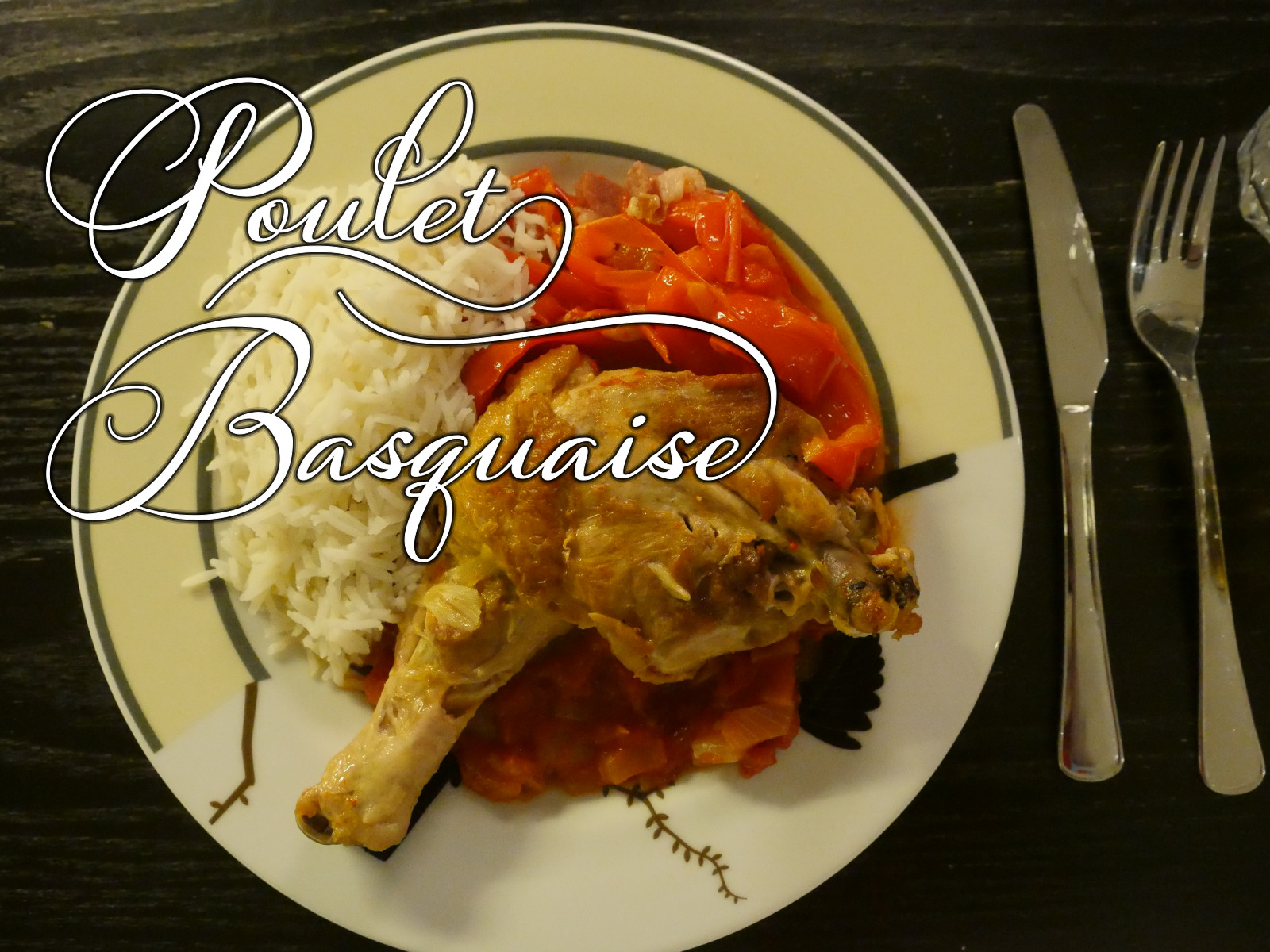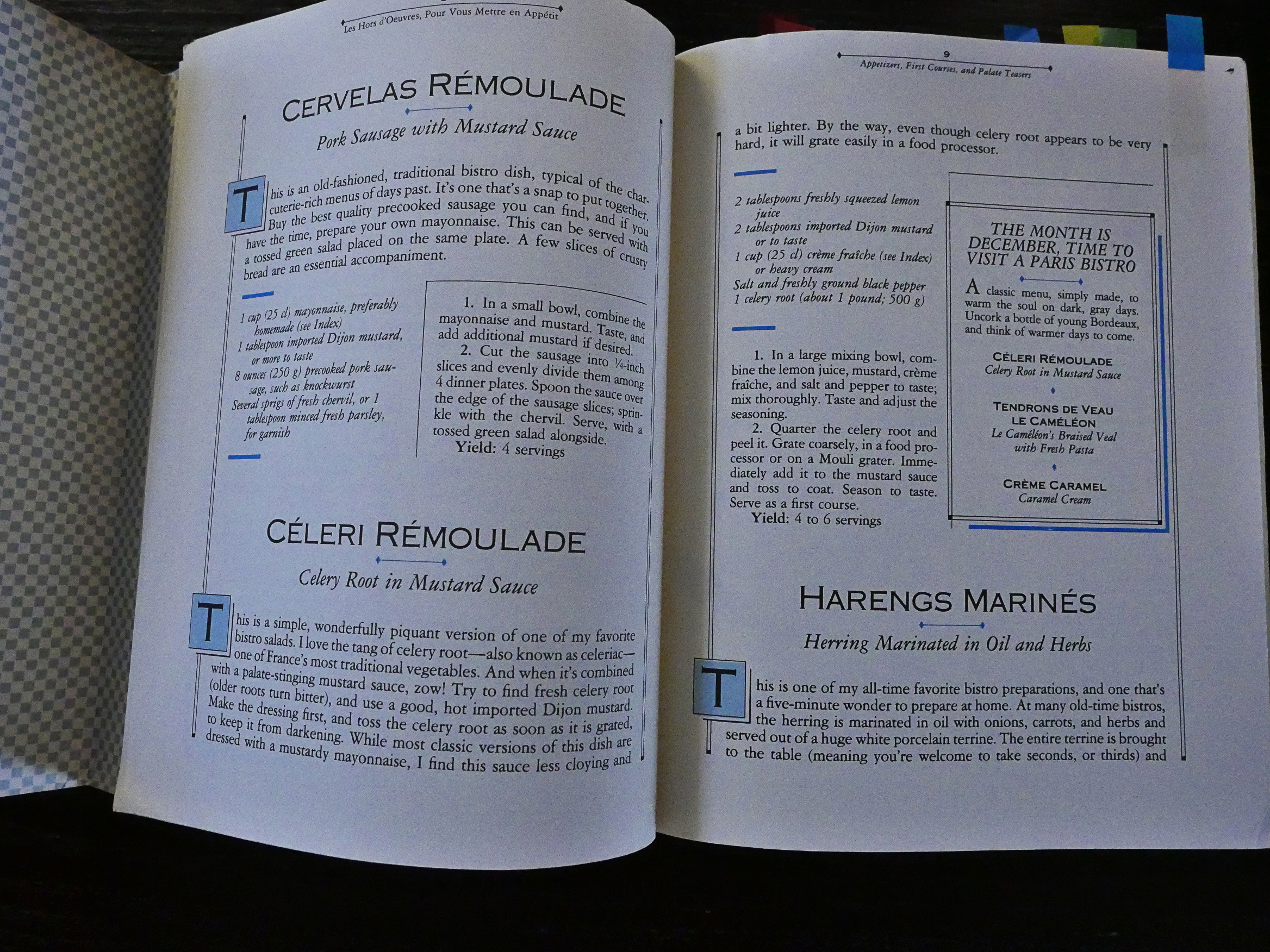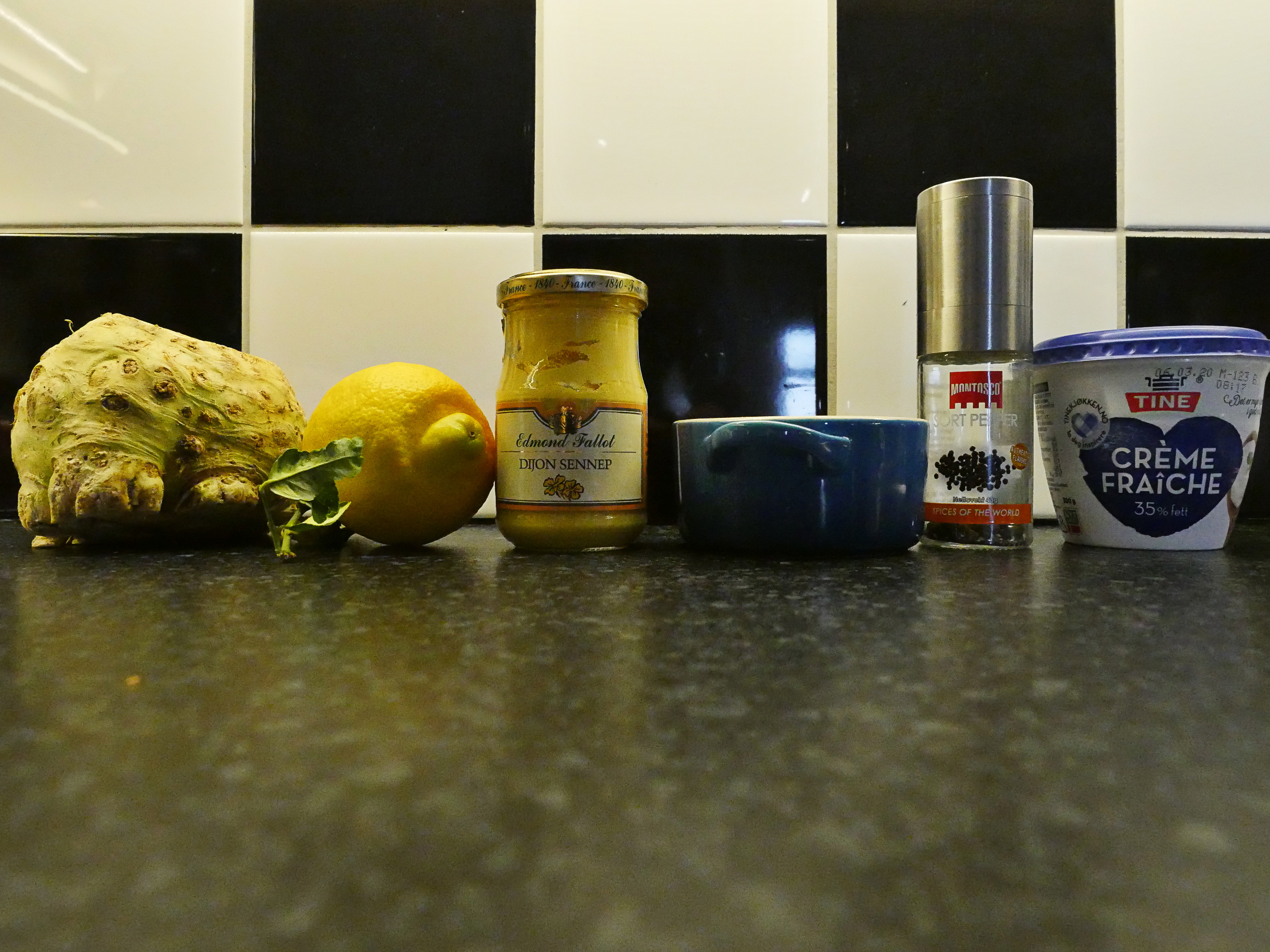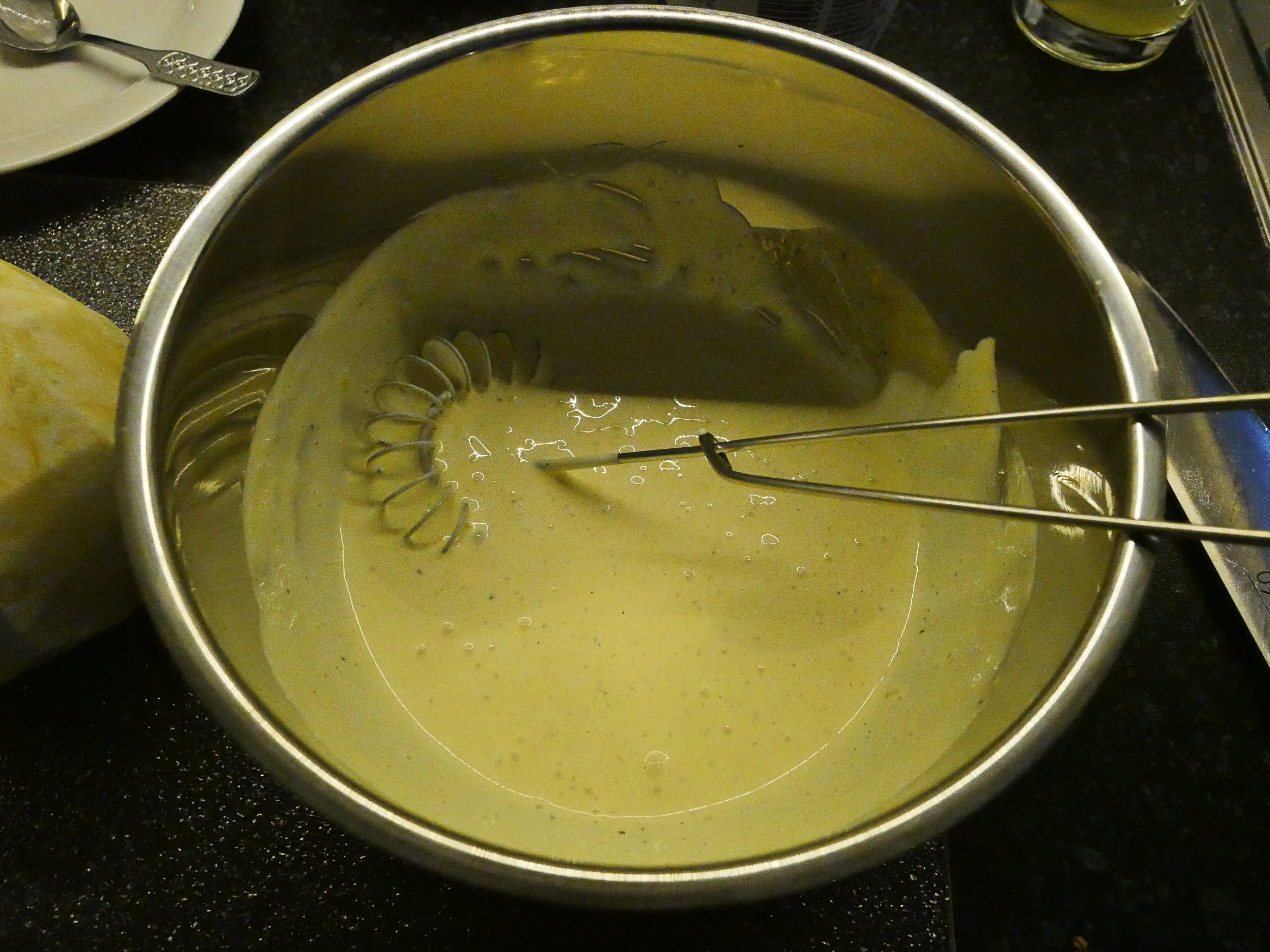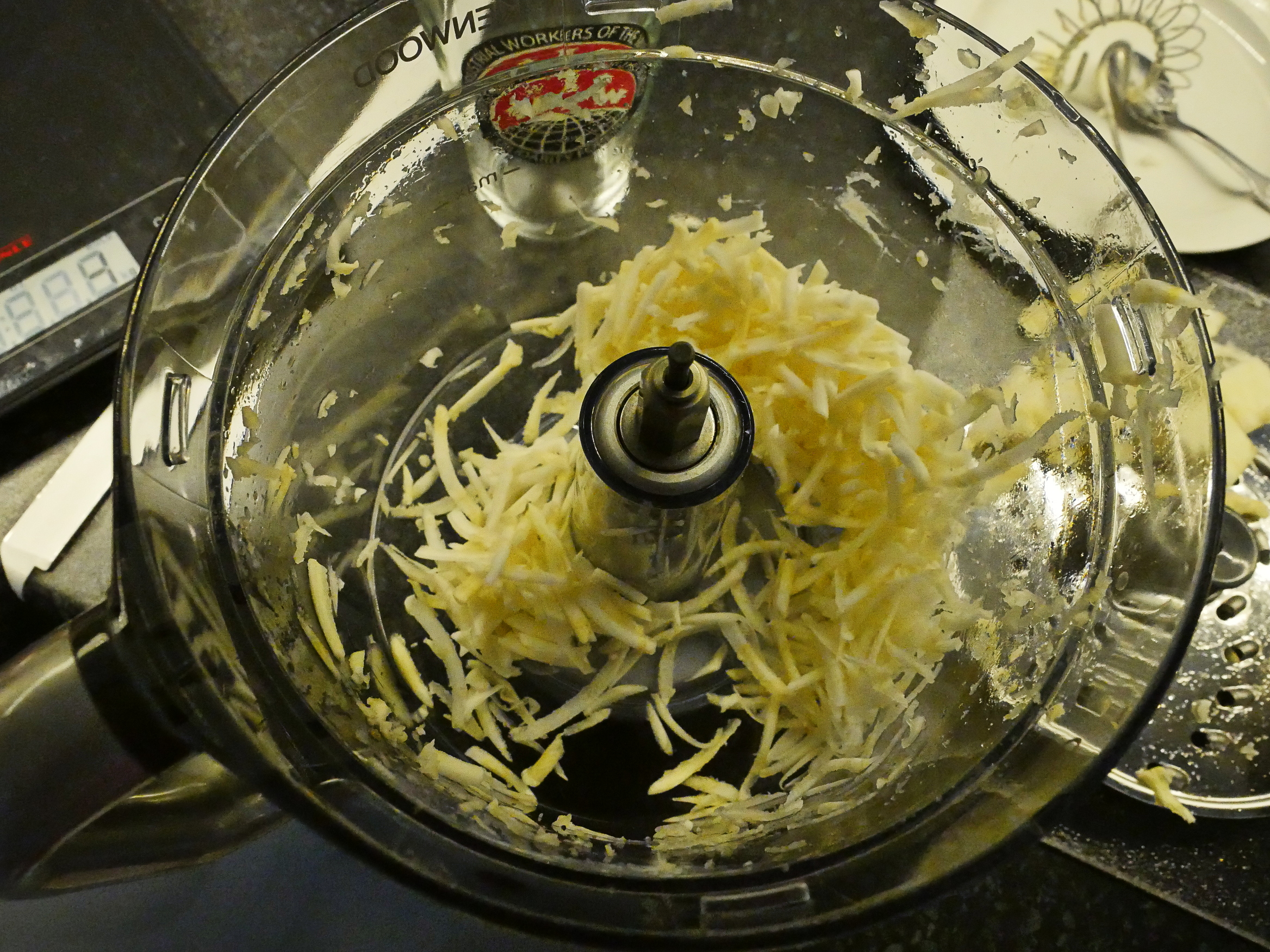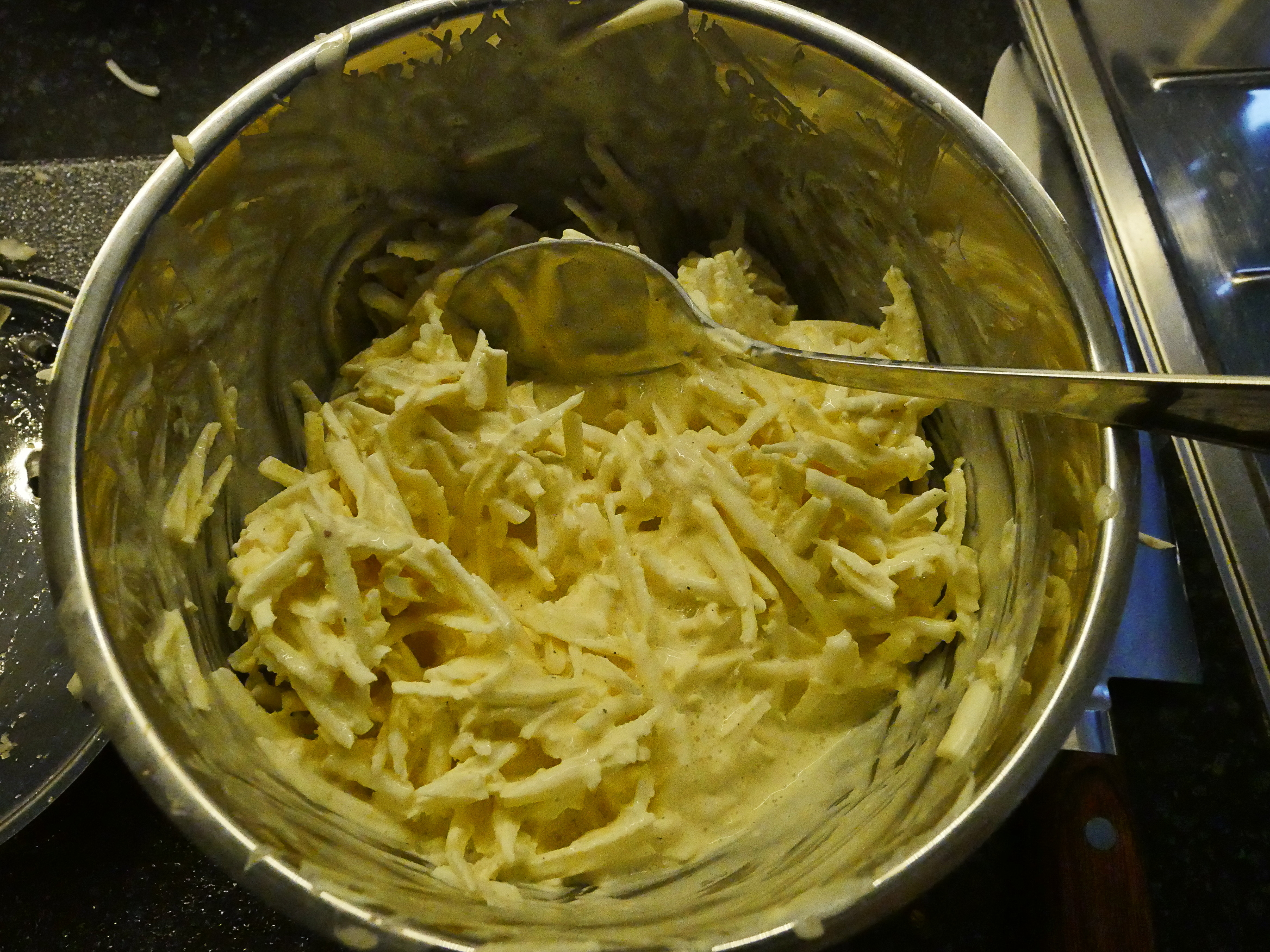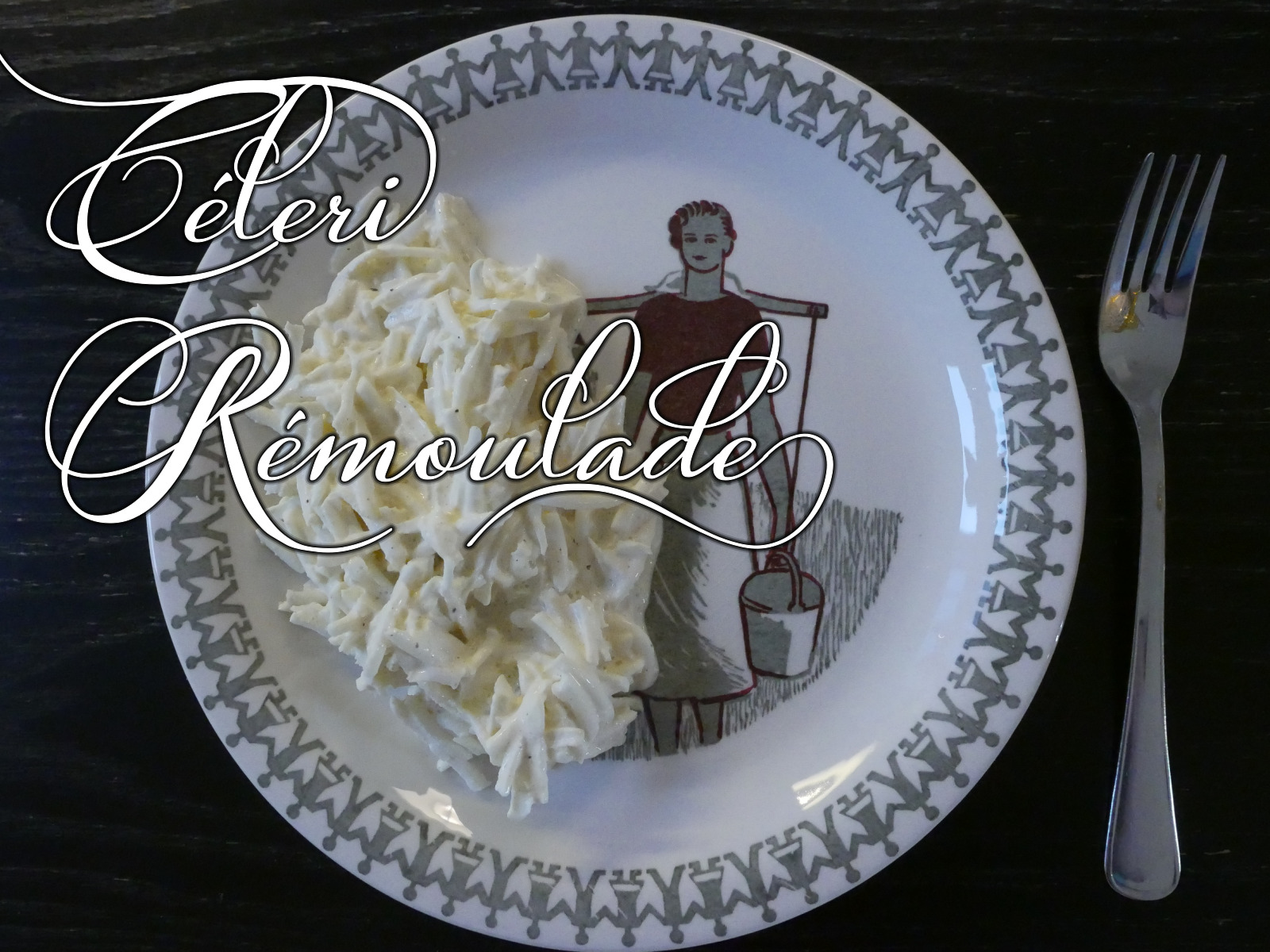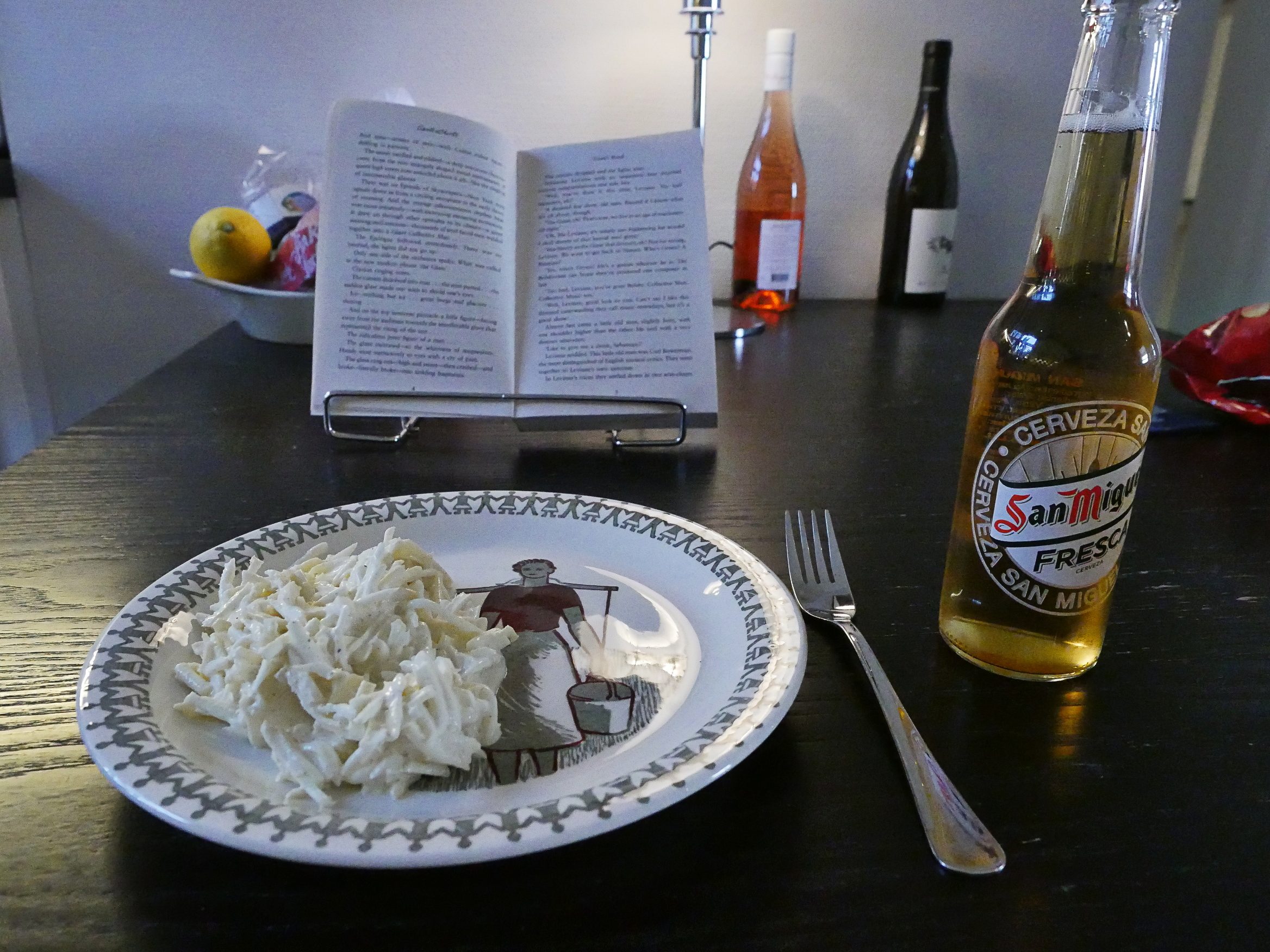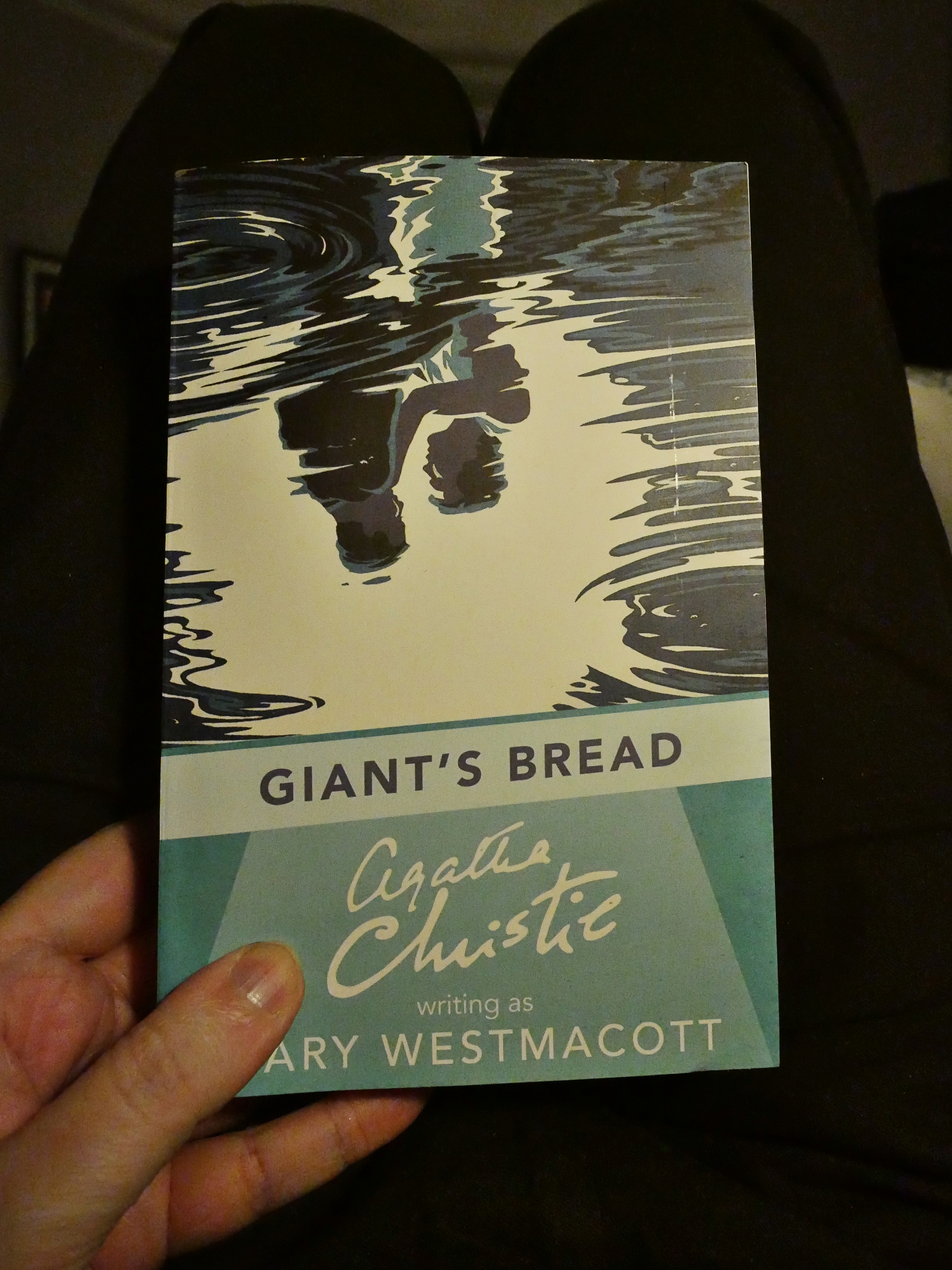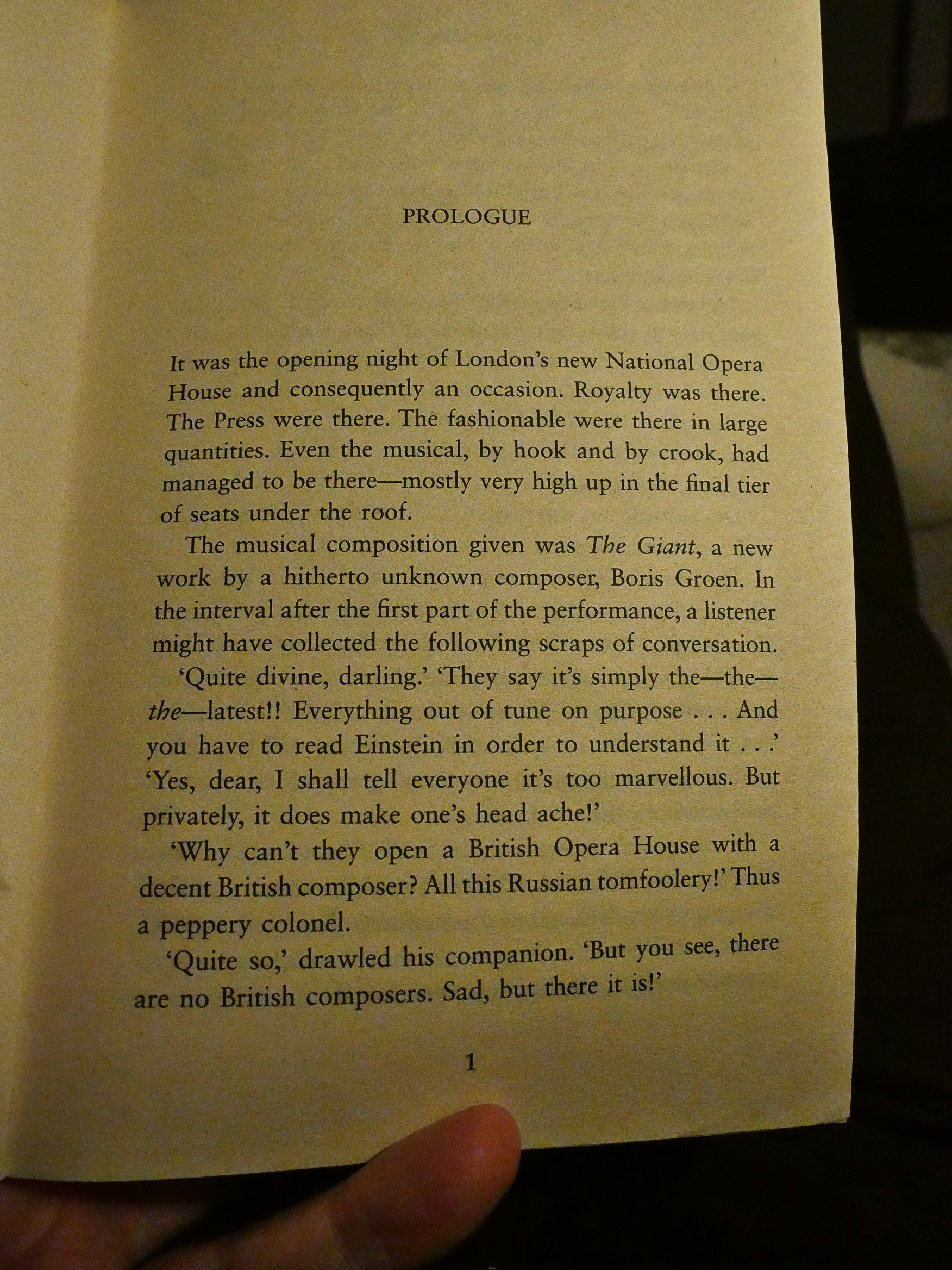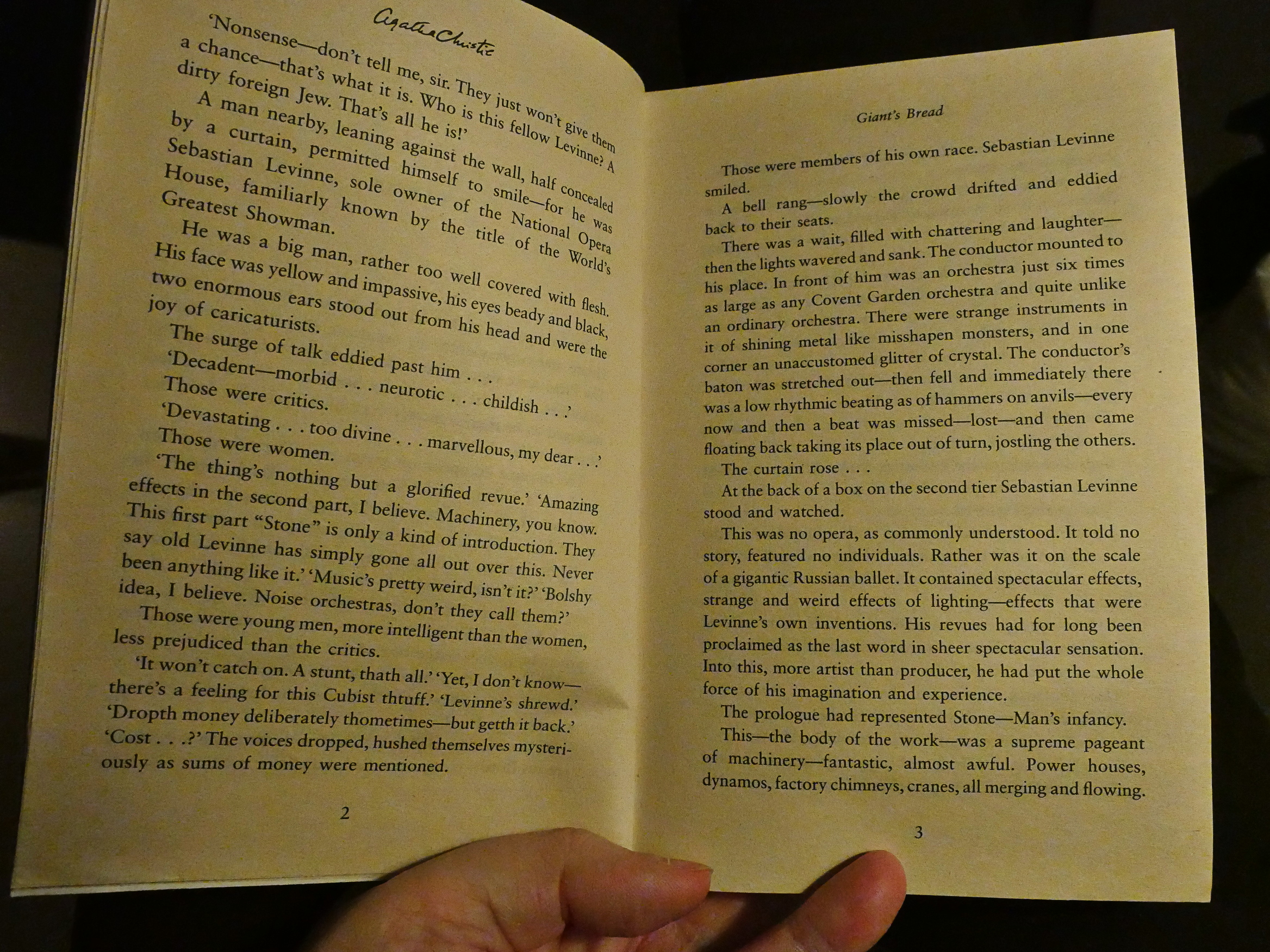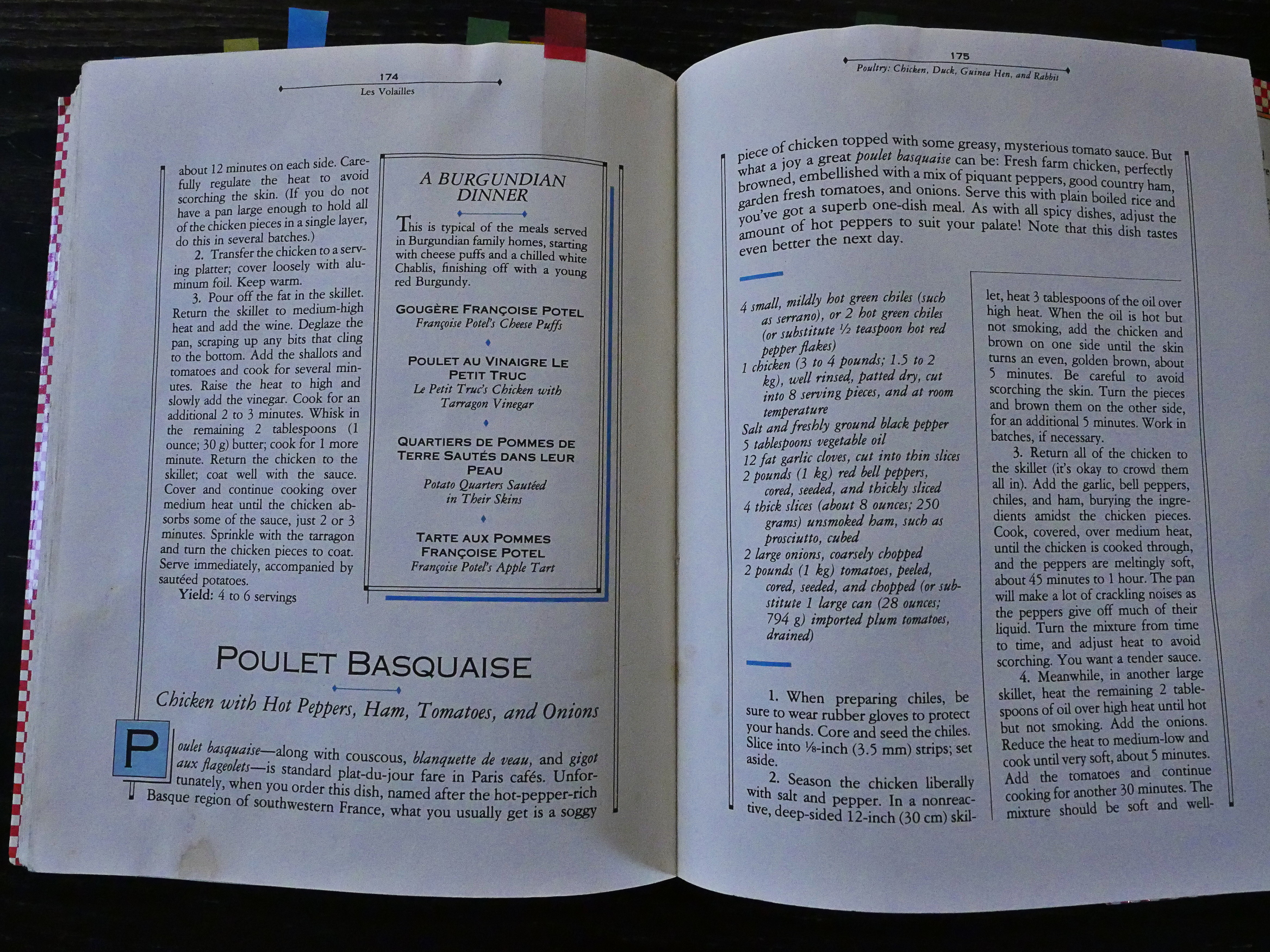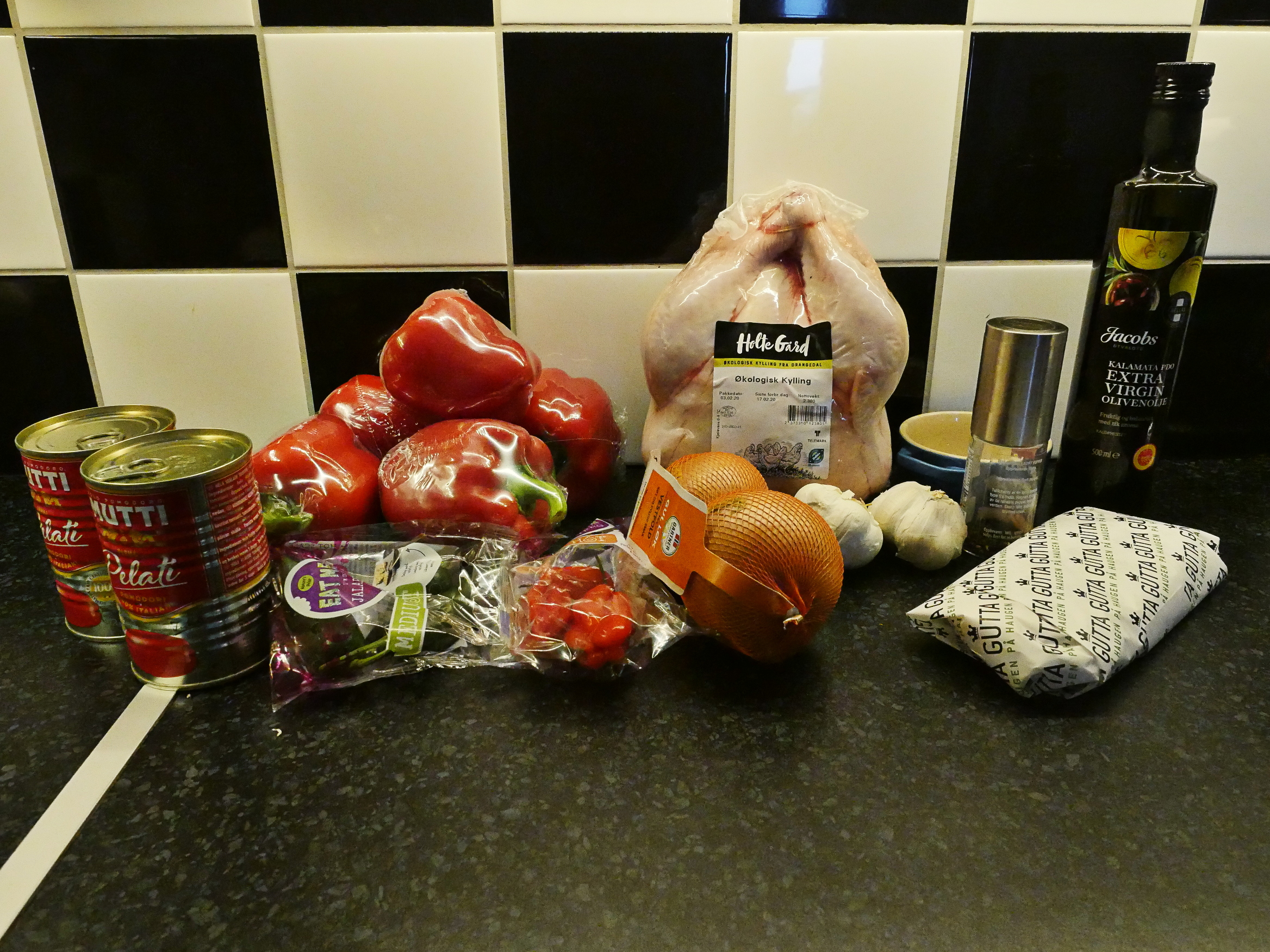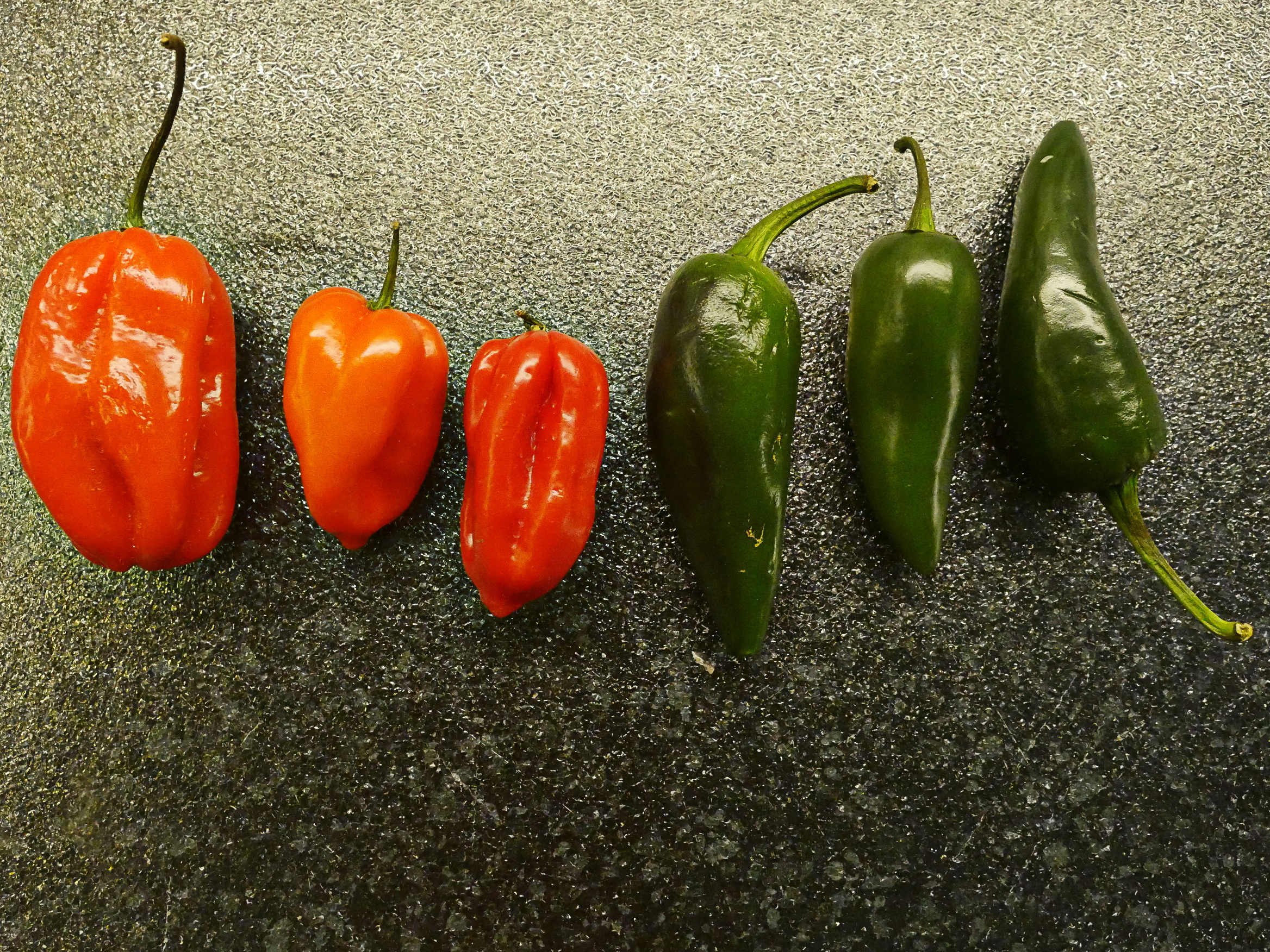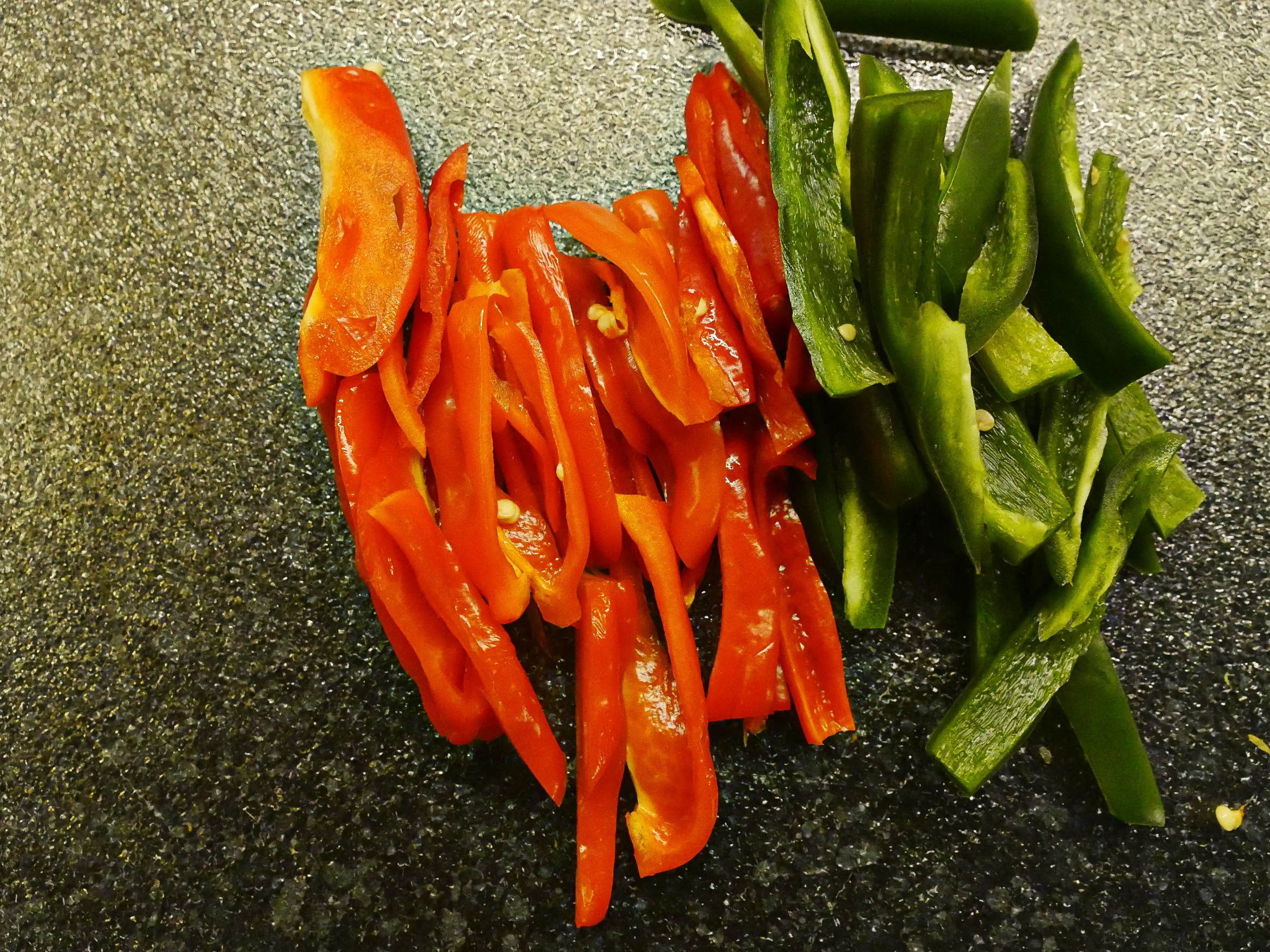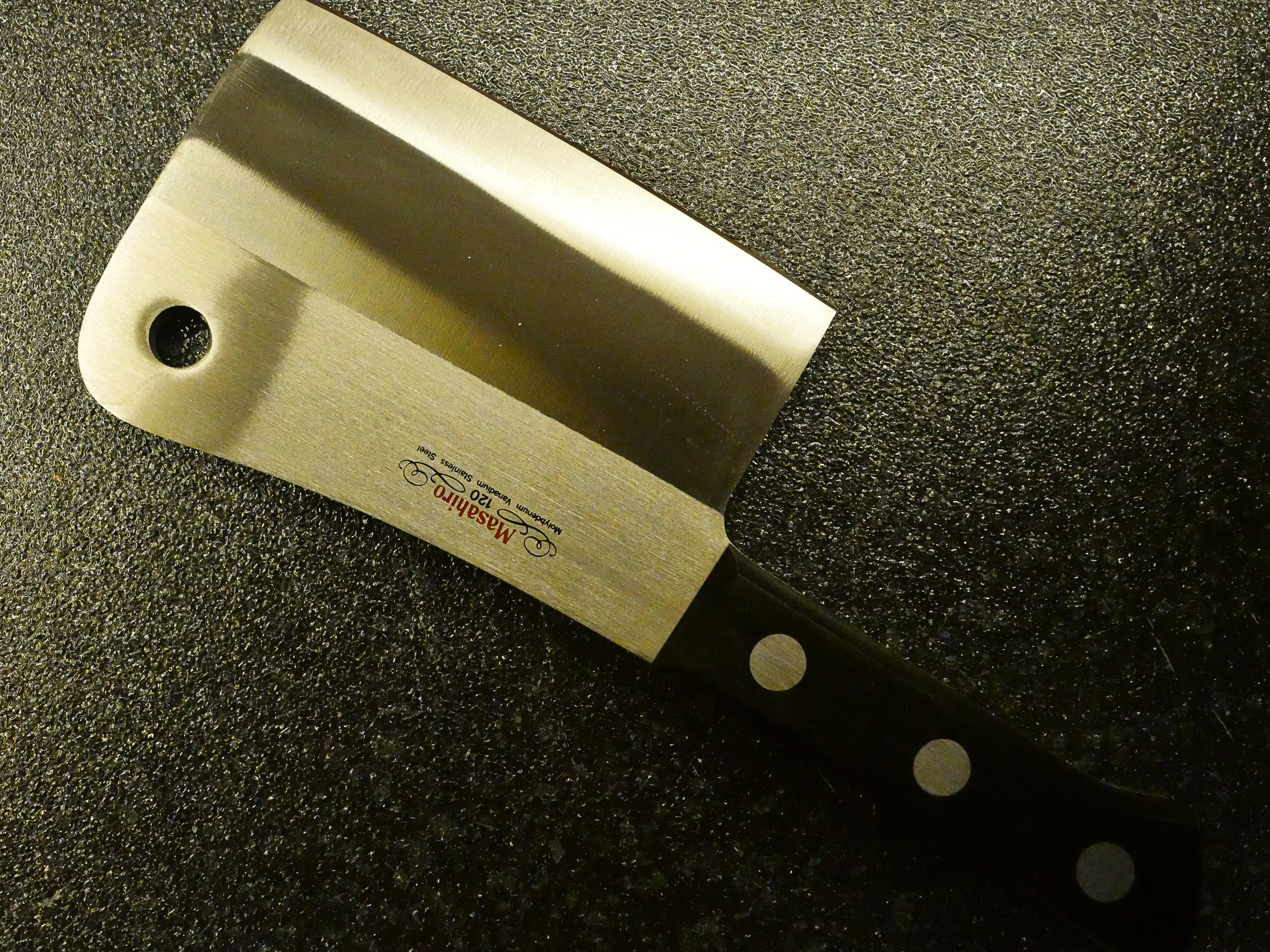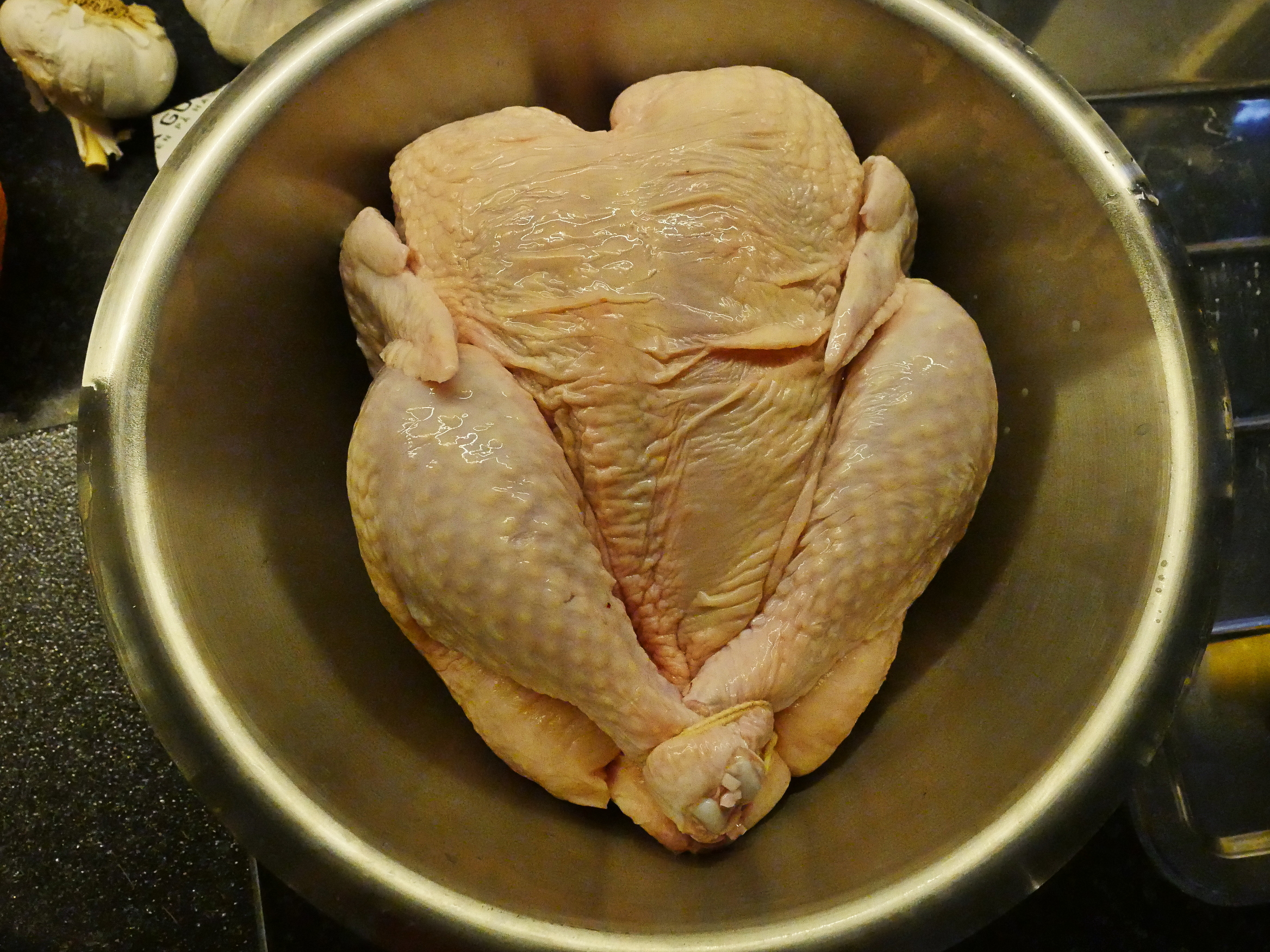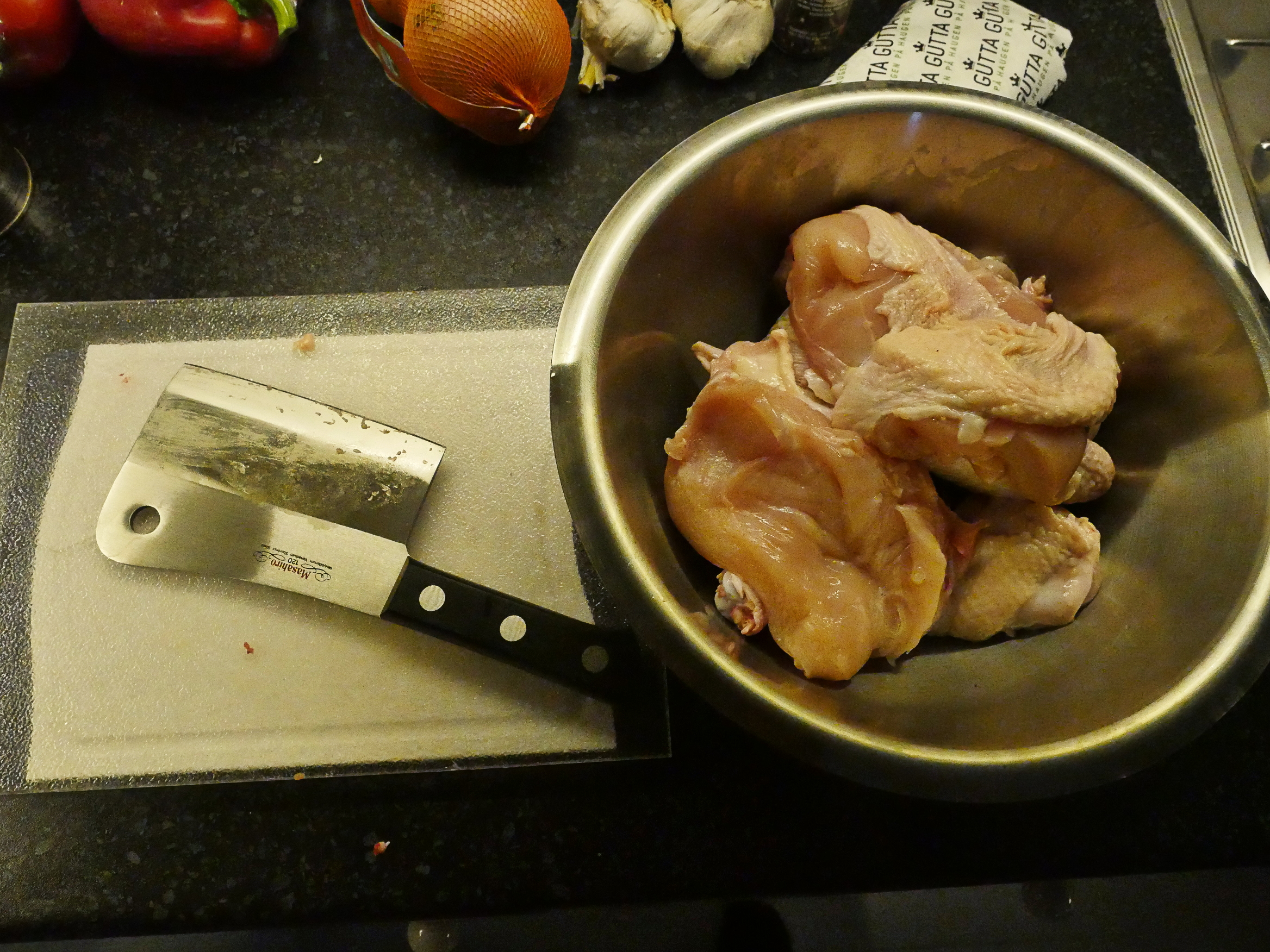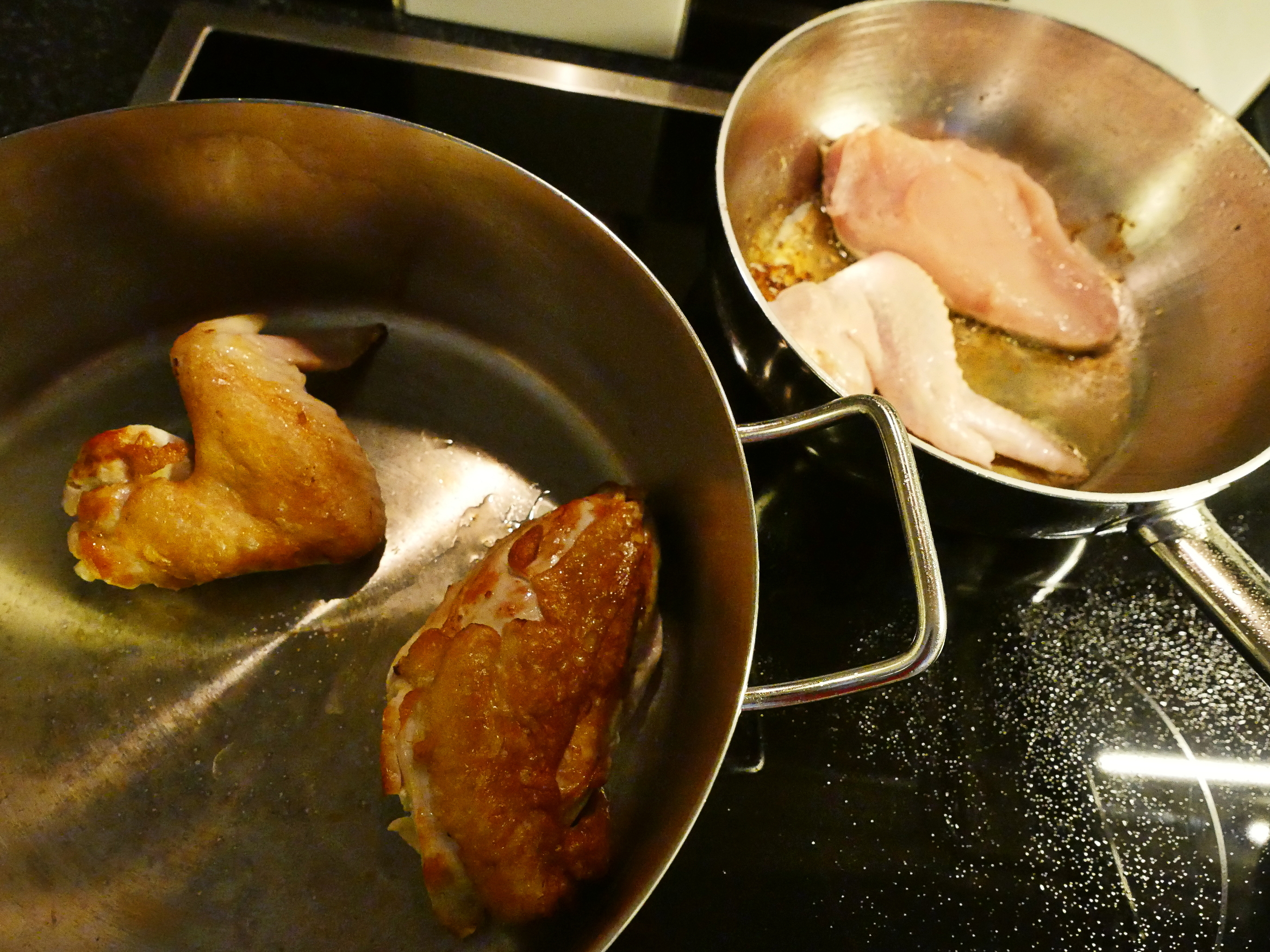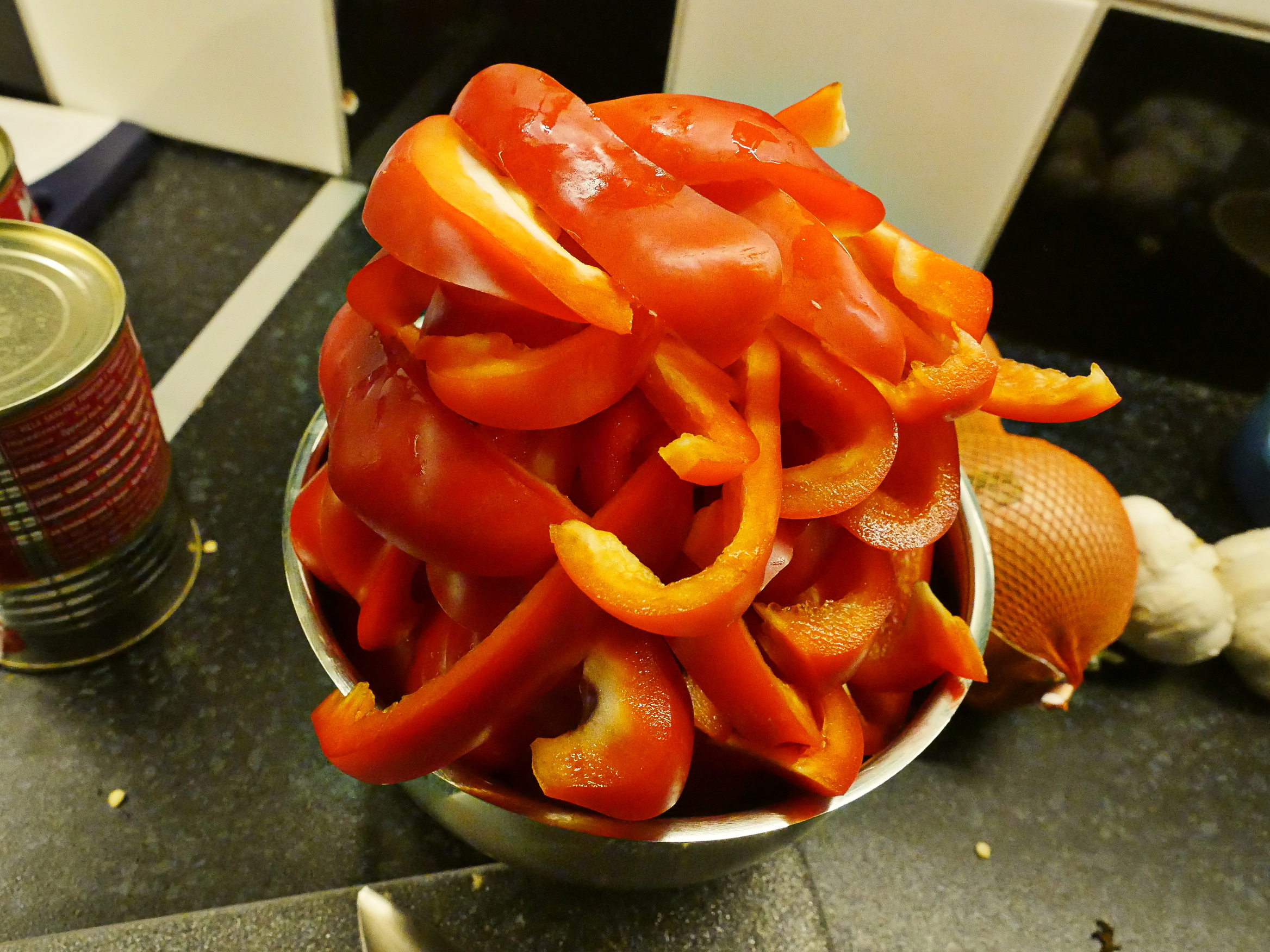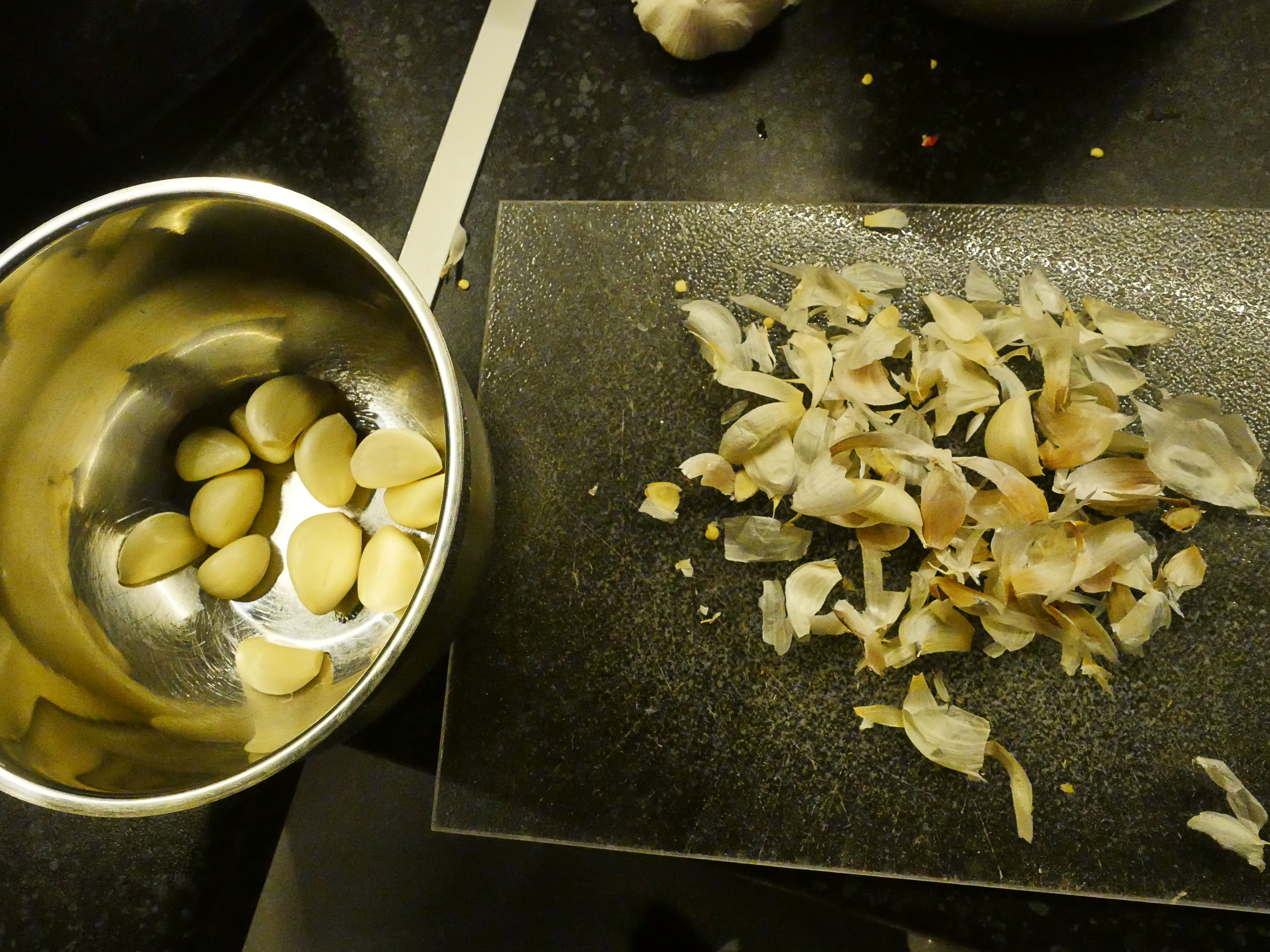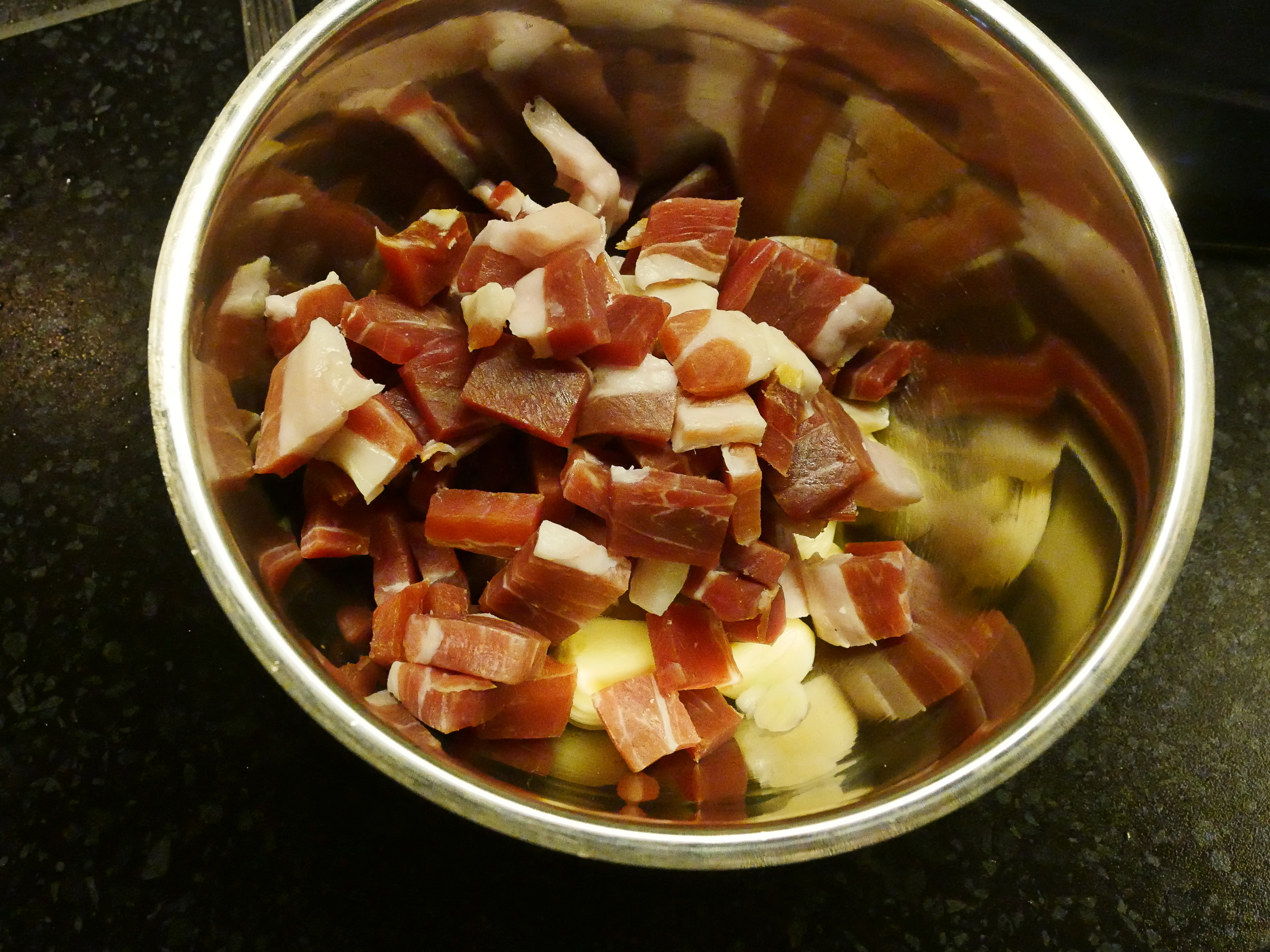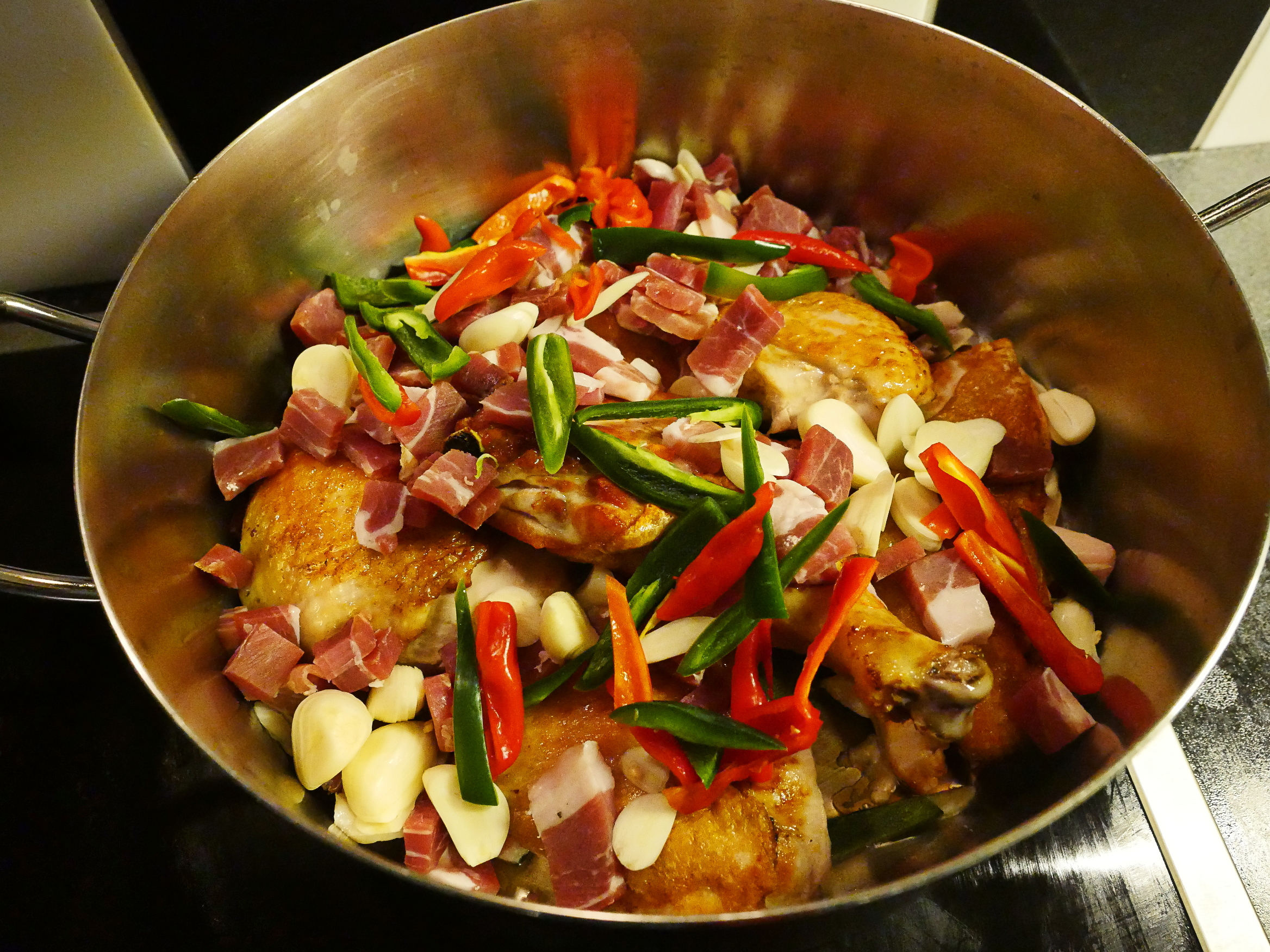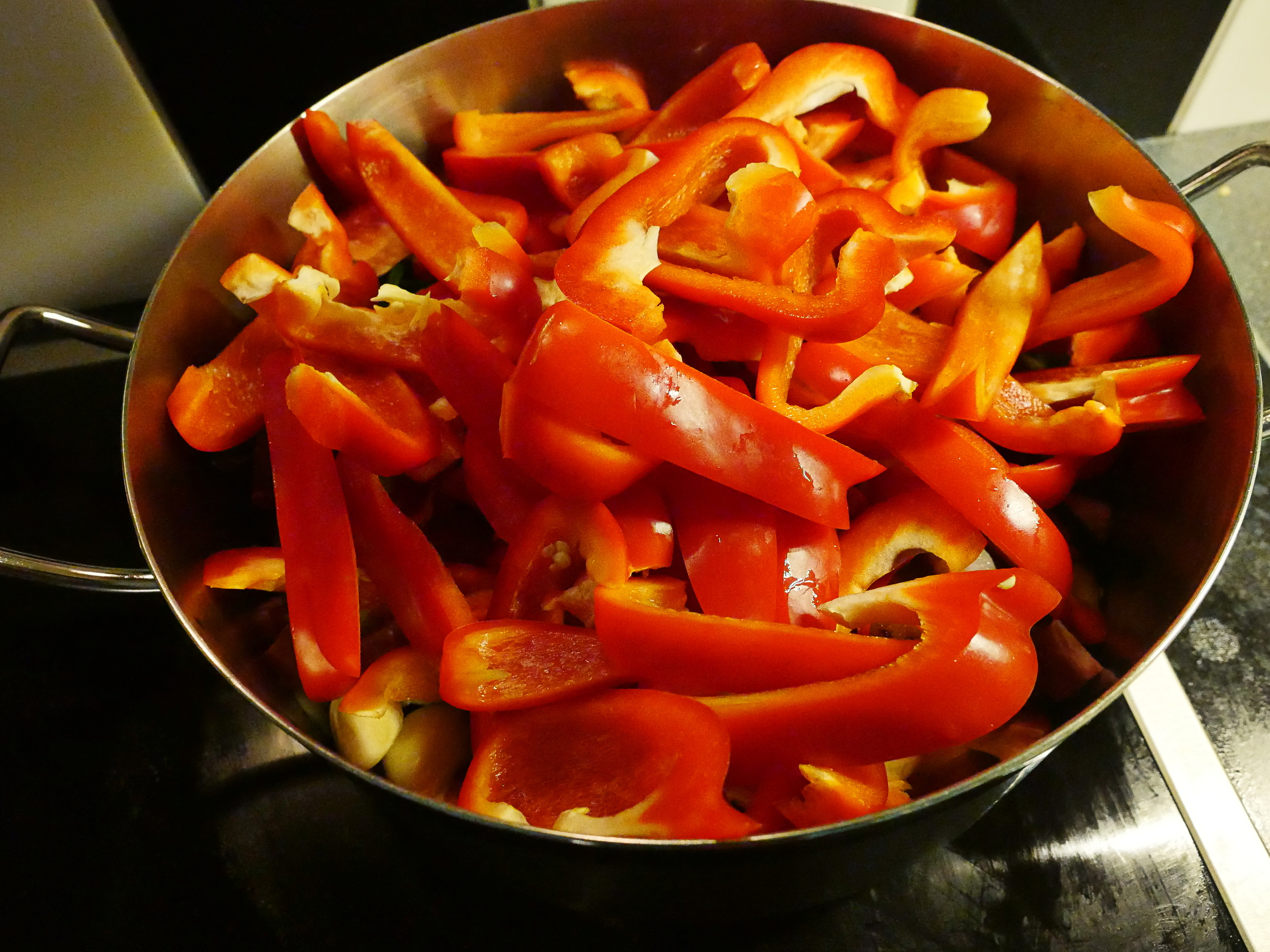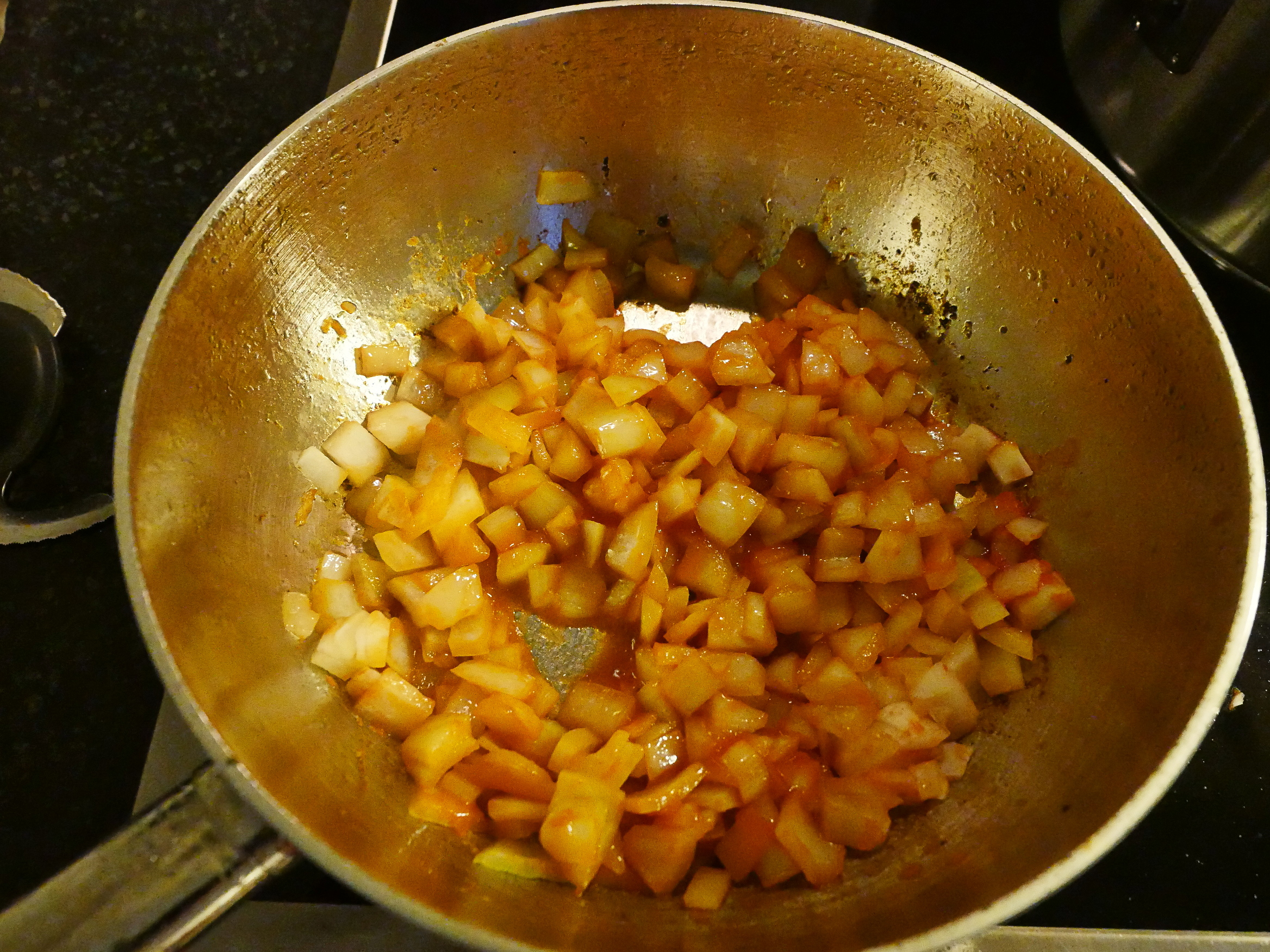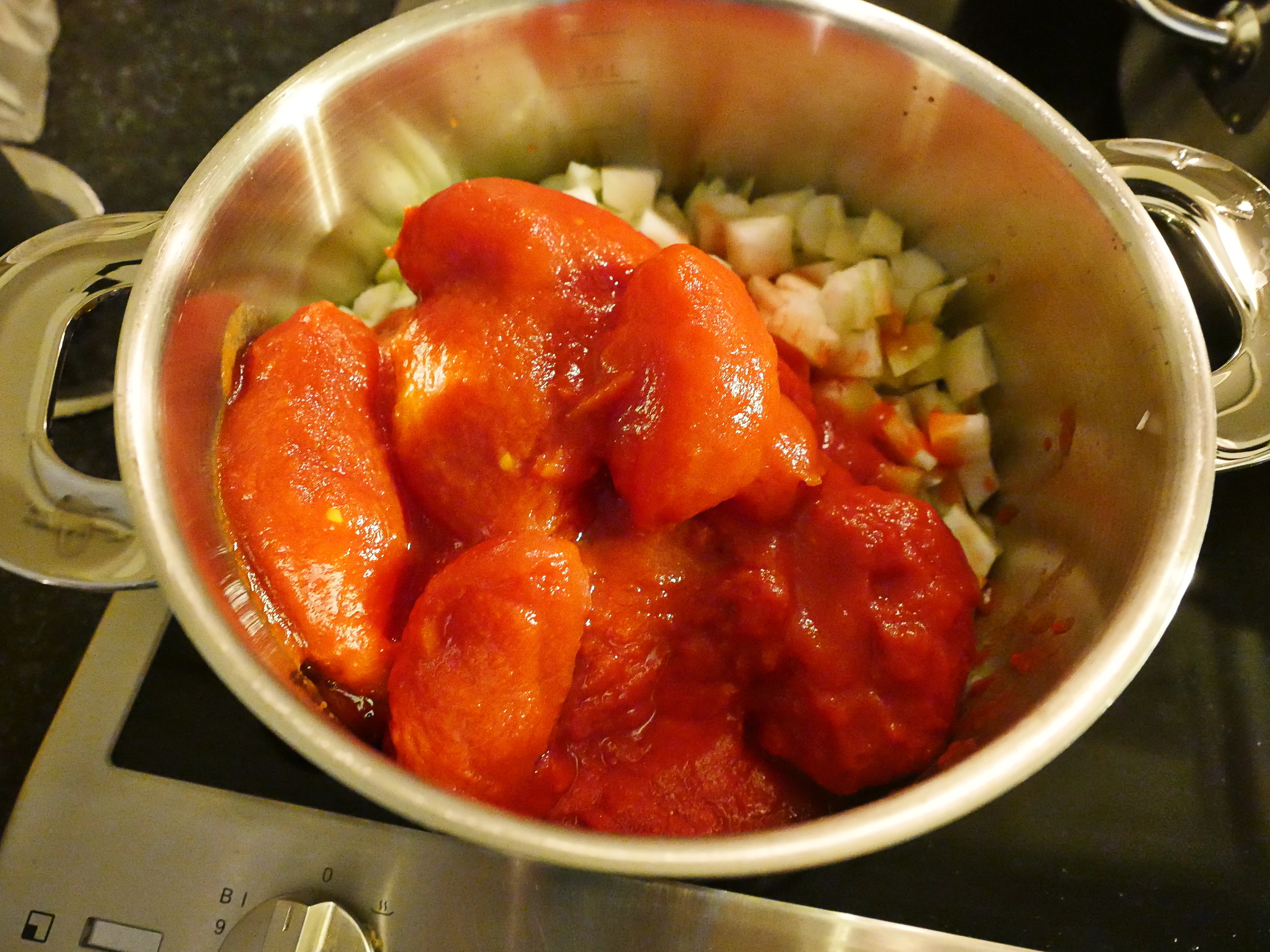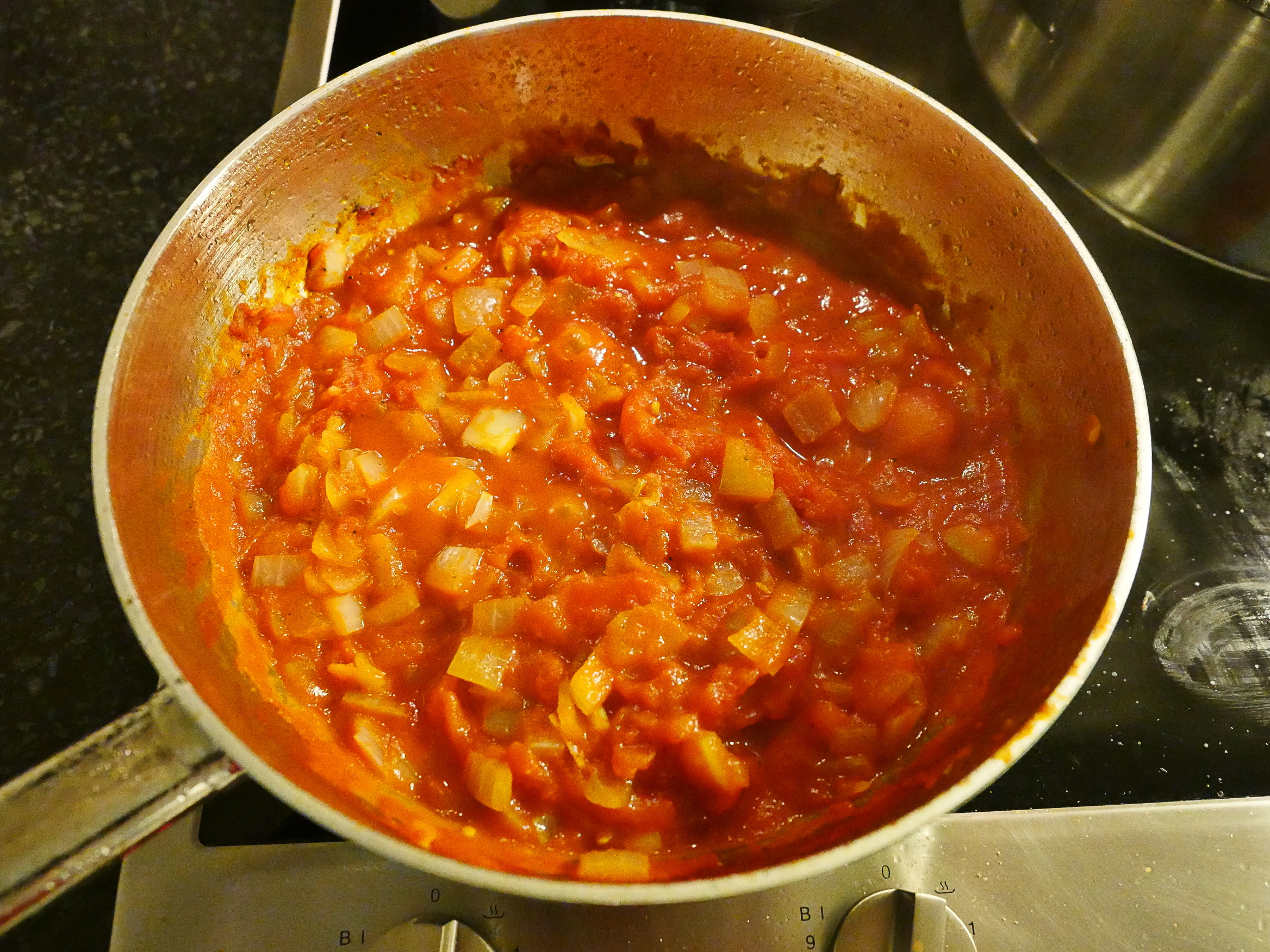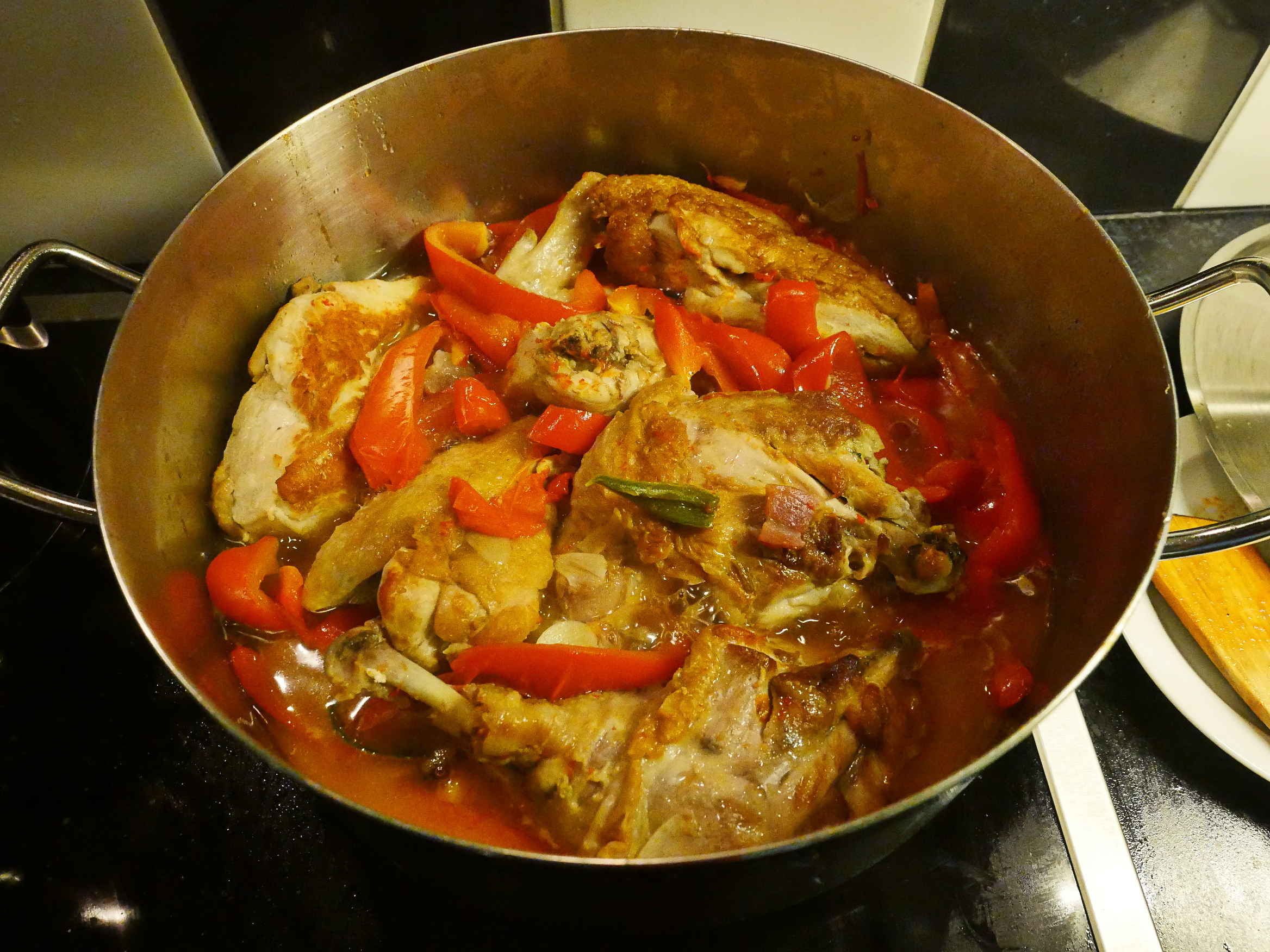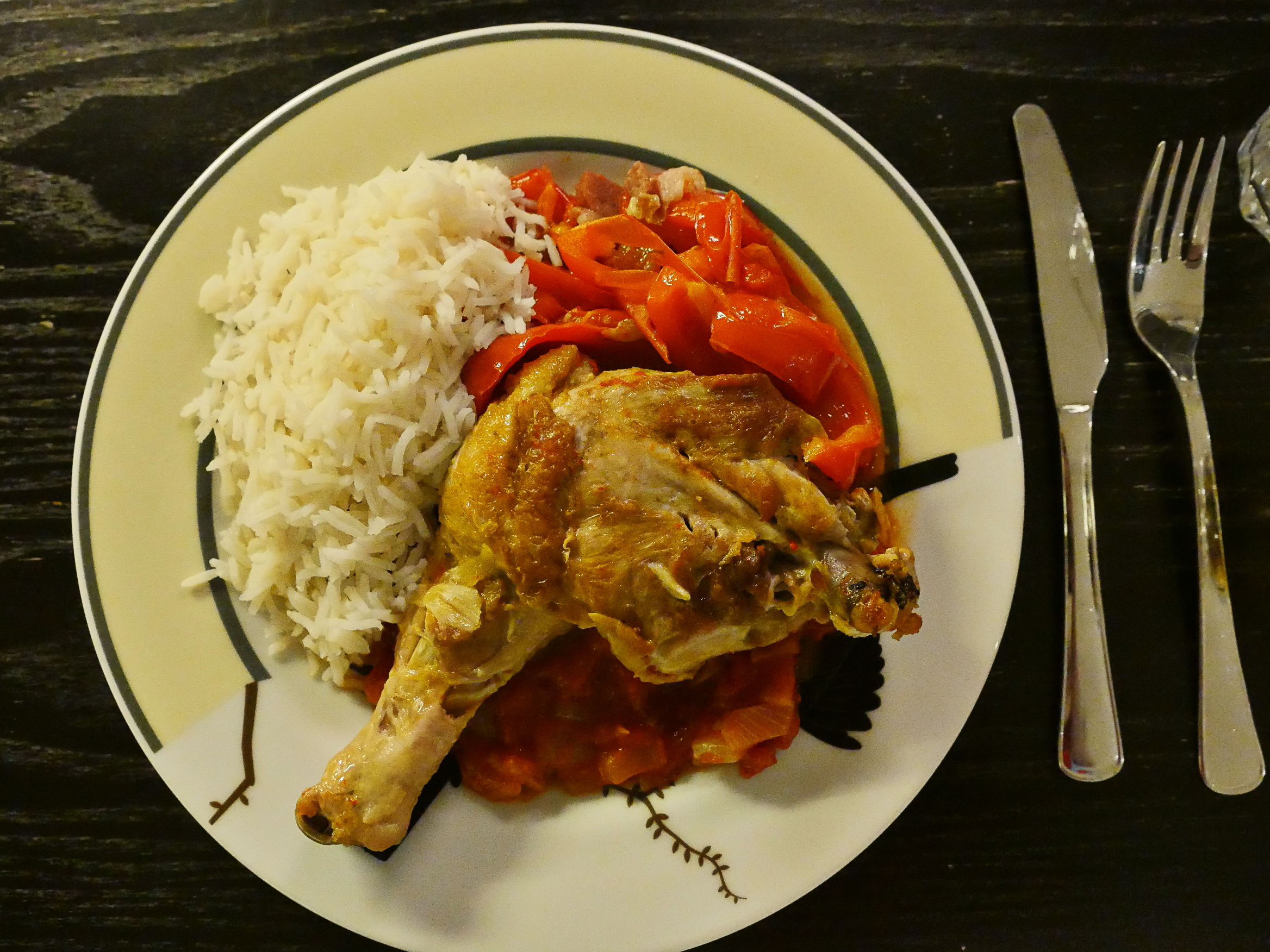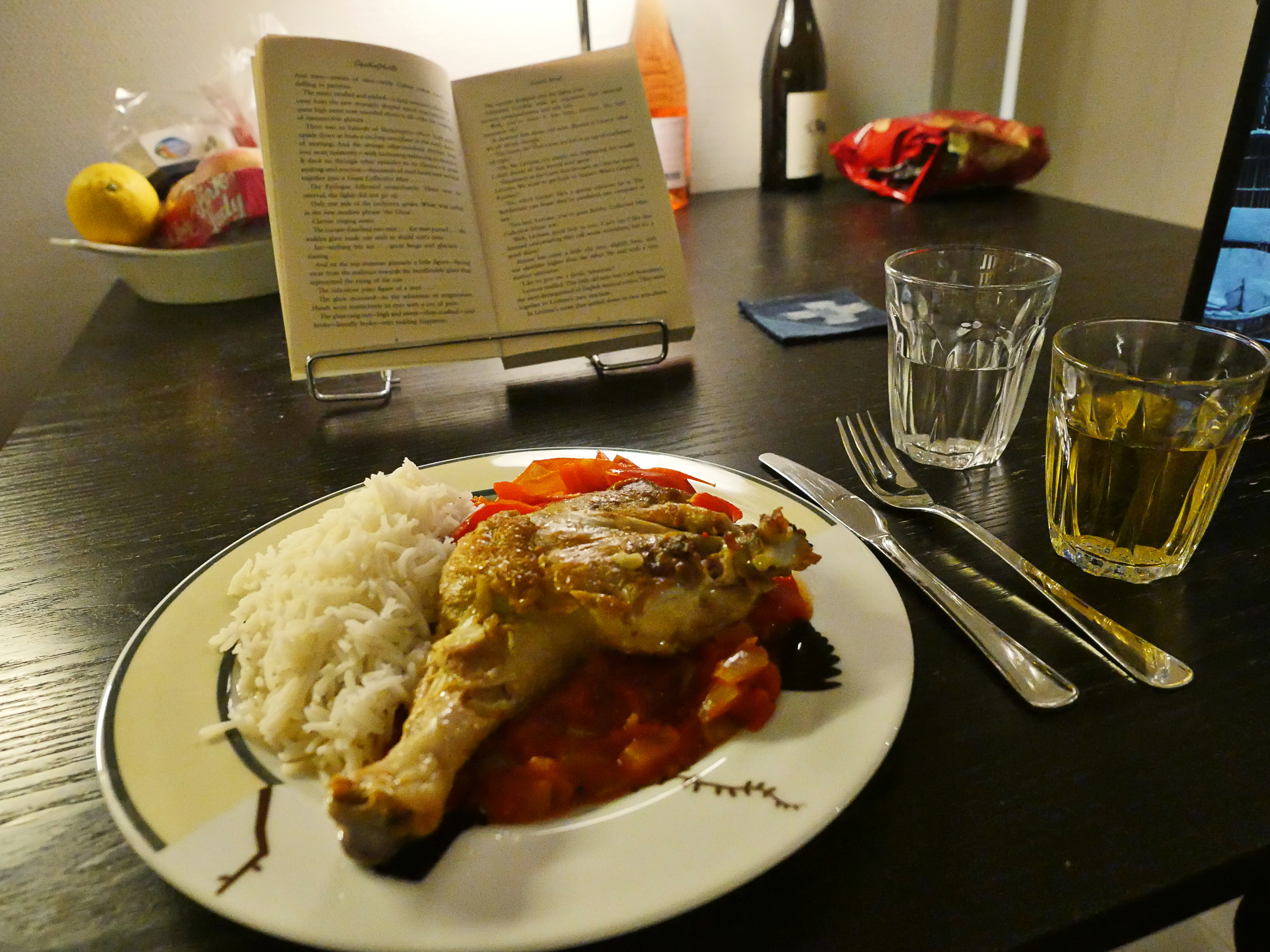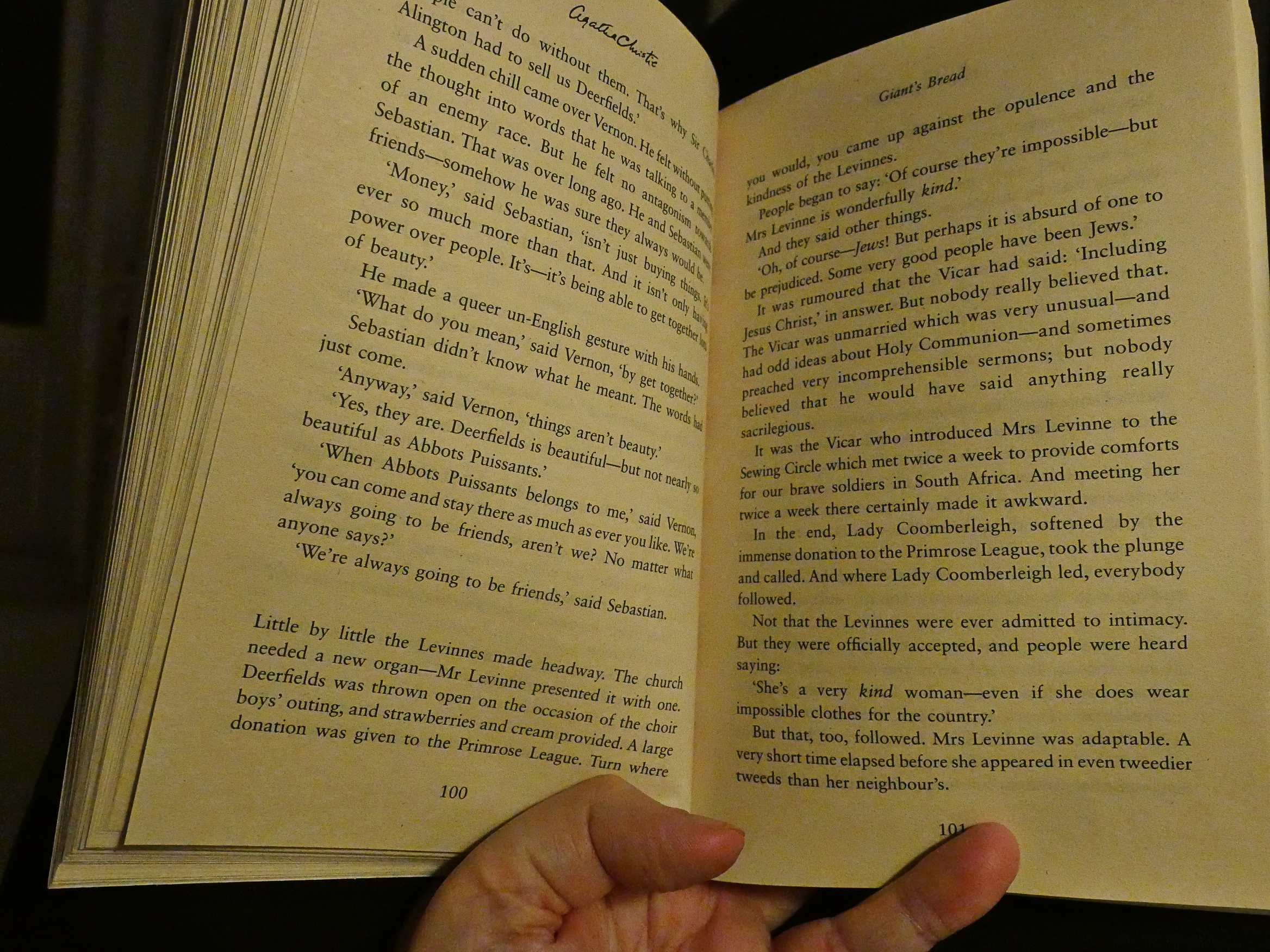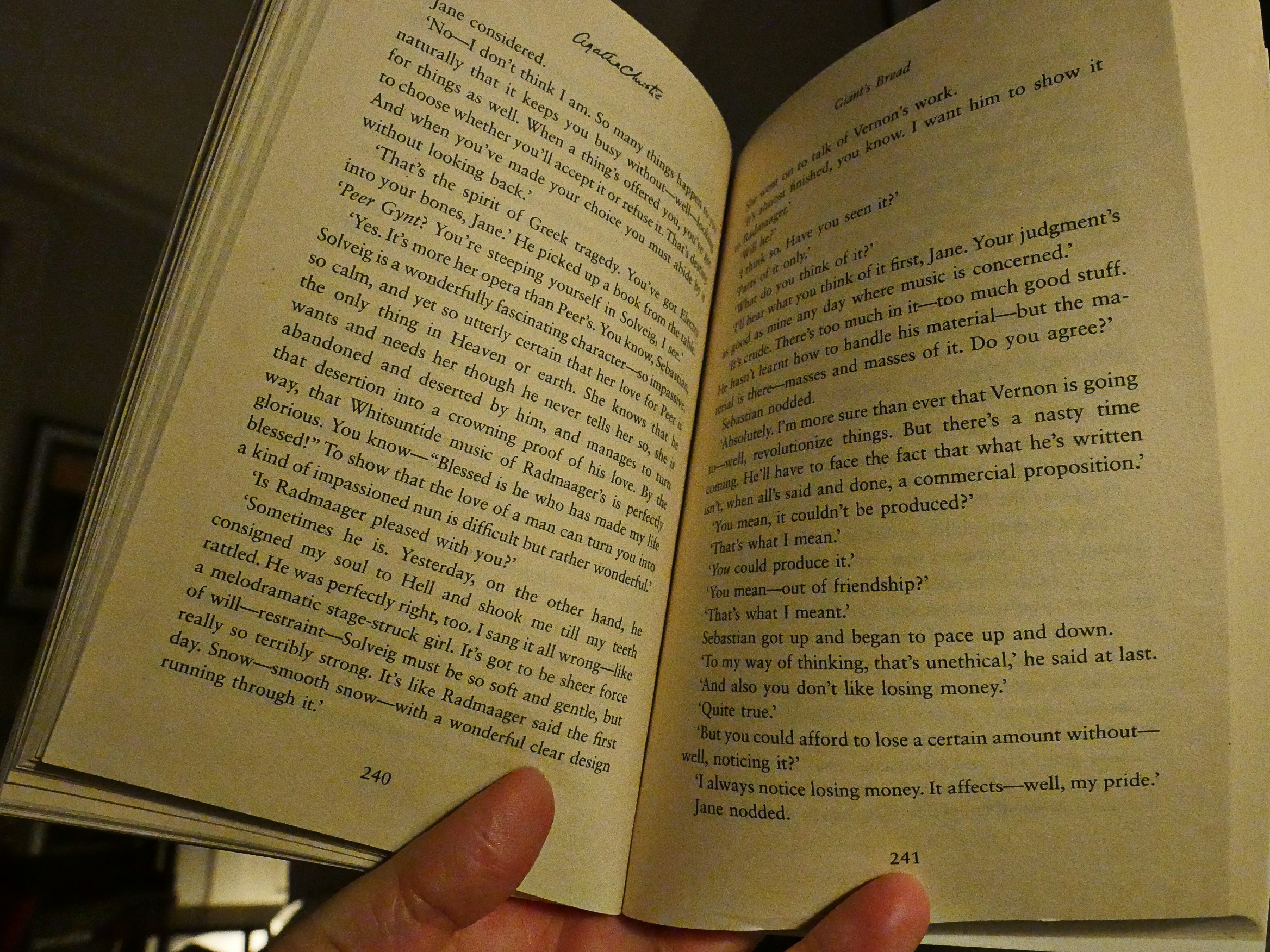Food time.
The next starter in the Bistro Cooking book is another rémoulade. And… it does look like a nice slaw, doesn’t it? Celery root and Dijon mustard. But… that’s like the entire dish? Just a slaw as a dish? That’s… kinda… Perhaps this is the the best slaw ever.
Anyway, it’s just those ingredients.
First mix the non-celery ingredients together…
Then I grated the celery root in the FUD professor.
And then just mix them together.
Yes, that’s all.
Well, it’s… a celery root slaw with a Dijon kinda thing going on. It’s very nice. But… as a dish by itself?
I still don’t get it. I added some bread and ate a whole bunch. It’s nice, so I had to find something to read while munching.
Today’s book is by Agatha Christie. A gasp is heard. “Agatha Christie? Surely you’ve read them before?” Yes, but not this one, because it’s a Mary Westmacott book: Christie wrote a handful of books under that name, and I’ve somehow never gotten around to it.
I think they’re… romances? But that’s all I know. Well, I don’t even know that. Let’s read the first three pages together:
Oh, well. Hm. Perhaps there are other reasons these books usually aren’t seen these days? It seems to start off in a very anti-Semitic mode, doesn’t it? The railing against modern music seems par for the course, but I didn’t quite recall that Christie was this conservative this early in her life. I mean, this book is from 1930.
Well, we’ll see… perhaps she’s really making fun of the fuddie-duddies and this “dirty foreign Jew” Levinne will turn out to be the romantic hero of the book, even if he has a “yellow” face and “beady and black” eyes and “enormous” ears.
I’m not holding my breath, though.
Well, time to make the mains.
After yet another not particularly good beef dish from the Bistro Cooking last week, I’m turning to the next chicken dish in the book. The chicken dishes have been somewhat hit or miss, but the hits have been pretty tasty.
Now, this one has the proper number of ingredients. It’s more fun when there’s more to chop.
Patricia Wells is usually very light on the spices. She’ll do salt and pepper, and if very adventurous, add some thyme. But this is a Basque(ish) dish, so it has peppers. She specifies four mild or two not-so-mild peppers, so I did three mild and three not-so-mild peppers.
You can see from the directions in the book that it’s really from another era: She suggests using rubber gloves while cutting the chillies. I didn’t. Hah! And I remembered not to poke myself in the eye with a finger while cutting.
Speaking of cutting: After the previous chicken I butchered, I thought I needed something more sturdy, because my kitchen knife just wasn’t well-suited for the task. Too light. So I got this axe! Hah hah!
Poor little chicken.
Chop chop. Cutting up the chicken was so much easier and almost (dare I say it) fun with the axe. It slices the meat like magic and hacking off the joints was so so easy with it. It’s my new favourite kitchen thing.
And then the chicken bits are browned on each side. I did it in several batches.
This dish has a weird amount of paprika: One kilo. I thought I misread the recipe the first time, but nope. I wonder how that’s going to turn out…
Lots of garlic in this thing, too.
And Parma ham! It’s got everything.
So when the chicken was done browning I had chopped everything in sight, and then it all goes into the same pan.
Behold! The paprika!
So while that’s cooking, there a sauce to make, which is very simple. It’s just onions, braised a bit..
And then a bunch of tinned tomatoes. Add some salt and pepper and that’s puttering away for half an hour…
Until very saucy.
Meanwhile, the paprika kinda… got reduced. A lot! There were no fluids added to the chicken pot: All that liquid is just from the paprika. Which is very tender now.
It’s…
Delicious!
There’s so many flavours going on here, with the peppers and the paprika, and it’s the perfect amount of paprika. It’s really quite special; easily the best dish I’ve made from the Bistro Cooking book. Hm. Except that salted cod one; that was also fantastic.
And the recipe claims that the leftovers are even better the next day. I guess I’ll find out.
I was all kinds of wrong about the book. First of all, it’s not a romance. Second of all, I was sarcastically suggesting that Levinne might turn out to be the romantic hero of the book… and… he isn’t, but he’s best friends with the main protagonist, and has been absolutely 100% decent and swell up till now.
So what kind of book is this? Is this Christie’s attempt at “straight” literature? Because if it is, it kinda doesn’t quite work.
With mystery books, there’s a built-in reason to read the book: Find out who the murderer is. With non-prefixed literature, it can be any number of things, but just telling us the life’s story of somebody we have no reason to be interested in… it’s usually not that. It doesn’t really seem like Christie is trying to say anything much about upper-class English people, either. It reads like she’s writing a mystery book, but forgot to put the mystery in.
That’s not to say that it’s an annoying read. Christie has written some awful, awful books, but when she’s on form, the books are fun to read, and so is this. I guess part of the attraction is just figuring out if she’s going anywhere with all this, because the plot itself (as it is) is preposterous: It’s about a guy who envisions music as a 4D space and is going to revolutionise music. So, Schoenberg, basically. I didn’t really peg Christie for a fan of serial music, but… then again, I know nothing about her.
It’s a slightly odd reading experience. Whenever I sit down to read it, I feel my mind going “*gah* I don’t wanna; I have no interest in this”. But then fifty pages fly past without me being annoyed in any way.
I guess what I’m saying is that it’s superficially well-written; the scenes have a flow and everything seems to just happen nicely without there being any snags. But the problem remains in that there’s no reason to be interested in reading about these non-entities.
It is slightly interesting that Christie is so sympathetic to these somewhat bohemian artistic people. As the grew older, she’d get more conservative, I think?
But I wonder what people thought of the book at the time. Here’s the Observer being very snippy:
Giant’s Bread is an ambitious and surprisingly sentimental story about a young man with musical genius, mixed love-affairs, a lost memory, a family tradition, and other commodities out of the bag of novelist’s tricks. Miss Westmacott shows narrative talent; but would presumably be more original if she strained less after originality. I should expect her book to be very popular.
I won’t be reading any further Westmacott books, I think.
This blog post is part of the Bistro
Cooking & Books series.
